

Writing to Think: Critical Thinking and the Writing Process
“Writing is thinking on paper.” (Zinsser, 1976, p. vii)
Google the term “critical thinking.” How many hits are there? On the day this tutorial was completed, Google found about 65,100,000 results in 0.56 seconds. That’s an impressive number, and it grows more impressively large every day. That’s because the nation’s educators, business leaders, and political representatives worry about the level of critical thinking skills among today’s students and workers.
What is Critical Thinking?
Simply put, critical thinking is sound thinking. Critical thinkers work to delve beneath the surface of sweeping generalizations, biases, clichés, and other quick observations that characterize ineffective thinking. They are willing to consider points of view different from their own, seek and study evidence and examples, root out sloppy and illogical argument, discern fact from opinion, embrace reason over emotion or preference, and change their minds when confronted with compelling reasons to do so. In sum, critical thinkers are flexible thinkers equipped to become active and effective spouses, parents, friends, consumers, employees, citizens, and leaders. Every area of life, in other words, can be positively affected by strong critical thinking.
Released in January 2011, an important study of college students over four years concluded that by graduation “large numbers [of American undergraduates] didn’t learn the critical thinking, complex reasoning and written communication skills that are widely assumed to be at the core of a college education” (Rimer, 2011, para. 1). The University designs curriculum, creates support programs, and hires faculty to help ensure you won’t be one of the students “[showing]no significant gains in . . . ‘higher order’ thinking skills” (Rimer, 2011, para. 4). One way the University works to help you build those skills is through writing projects.
Writing and Critical Thinking
Say the word “writing” and most people think of a completed publication. But say the word “writing” to writers, and they will likely think of the process of composing. Most writers would agree with novelist E. M. Forster, who wrote, “How can I know what I think until I see what I say?” (Forster, 1927, p. 99). Experienced writers know that the act of writing stimulates thinking.
Inexperienced and experienced writers have very different understandings of composition. Novice writers often make the mistake of believing they have to know what they’re going to write before they can begin writing. They often compose a thesis statement before asking questions or conducting research. In the course of their reading, they might even disregard material that counters their pre-formed ideas. This is not writing; it is recording.
In contrast, experienced writers begin with questions and work to discover many different answers before settling on those that are most convincing. They know that the act of putting words on paper or a computer screen helps them invent thought and content. Rather than trying to express what they already think, they express what the act of writing leads them to think as they put down words. More often than not, in other words, experienced writers write their way into ideas, which they then develop, revise, and refine as they go.
What has this notion of writing to do with critical thinking? Everything.
Consider the steps of the writing process: prewriting, outlining, drafting, revising, editing, seeking feedback, and publishing. These steps are not followed in a determined or strict order; instead, the effective writer knows that as they write, it may be necessary to return to an earlier step. In other words, in the process of revision, a writer may realize that the order of ideas is unclear. A new outline may help that writer re-order details. As they write, the writer considers and reconsiders the effectiveness of the work.
The writing process, then, is not just a mirror image of the thinking process: it is the thinking process. Confronted with a topic, an effective critical thinker/writer
- asks questions
- seeks answers
- evaluates evidence
- questions assumptions
- tests hypotheses
- makes inferences
- employs logic
- draws conclusions
- predicts readers’ responses
- creates order
- drafts content
- seeks others’ responses
- weighs feedback
- criticizes their own work
- revises content and structure
- seeks clarity and coherence
Example of Composition as Critical Thinking
“Good writing is fueled by unanswerable questions” (Lane, 1993, p. 15).
Imagine that you have been asked to write about a hero or heroine from history. You must explain what challenges that individual faced and how they conquered them. Now imagine that you decide to write about Rosa Parks and her role in the modern Civil Rights movement. Take a moment and survey what you already know. She refused to get up out of her seat on a bus so a White man could sit in it. She was arrested. As a result, Blacks in Montgomery protested, influencing the Montgomery Bus Boycott. Martin Luther King, Jr. took up leadership of the cause, and ultimately a movement was born.
Is that really all there is to Rosa Parks’s story? What questions might a thoughtful writer ask? Here a few:
- Why did Rosa Parks refuse to get up on that particular day?
- Was hers a spontaneous or planned act of defiance?
- Did she work? Where? Doing what?
- Had any other Black person refused to get up for a White person?
- What happened to that individual or those individuals?
- Why hadn’t that person or those persons received the publicity Parks did?
- Was Parks active in Civil Rights before that day?
- How did she learn about civil disobedience?
Even just these few questions could lead to potentially rich information.
Factual information would not be enough, however, to satisfy an assignment that asks for an interpretation of that information. The writer’s job for the assignment is to convince the reader that Parks was a heroine; in this way the writer must make an argument and support it. The writer must establish standards of heroic behavior. More questions arise:
- What is heroic action?
- What are the characteristics of someone who is heroic?
- What do heroes value and believe?
- What are the consequences of a hero’s actions?
- Why do they matter?
Now the writer has even more research and more thinking to do.
By the time they have raised questions and answered them, raised more questions and answered them, and so on, they are ready to begin writing. But even then, new ideas will arise in the course of planning and drafting, inevitably leading the writer to more research and thought, to more composition and refinement.
Ultimately, every step of the way over the course of composing a project, the writer is engaged in critical thinking because the effective writer examines the work as they develop it.
Why Writing to Think Matters
Writing practice builds critical thinking, which empowers people to “take charge of [their] own minds” so they “can take charge of [their] own lives . . . and improve them, bringing them under [their] self command and direction” (Foundation for Critical Thinking, 2020, para. 12). Writing is a way of coming to know and understand the self and the changing world, enabling individuals to make decisions that benefit themselves, others, and society at large. Your knowledge alone – of law, medicine, business, or education, for example – will not be enough to meet future challenges. You will be tested by new unexpected circumstances, and when they arise, the open-mindedness, flexibility, reasoning, discipline, and discernment you have learned through writing practice will help you meet those challenges successfully.
Forster, E.M. (1927). Aspects of the novel . Harcourt, Brace & Company.
The Foundation for Critical Thinking. (2020, June 17). Our concept and definition of critical thinking . https://www.criticalthinking.org/pages/our-concept-of-critical-thinking/411
Lane, B. (1993). After the end: Teaching and learning creative revision . Heinemann.
Rimer, S. (2011, January 18). Study: Many college students not learning to think critically . The Hechinger Report. https://www.mcclatchydc.com/news/nation-world/national/article24608056.html
Zinsser, W. (1976). On writing well: The classic guide to writing nonfiction . HarperCollins.
Share this:
- Click to email a link to a friend (Opens in new window)
- Click to share on Facebook (Opens in new window)
- Click to share on Reddit (Opens in new window)
- Click to share on Twitter (Opens in new window)
- Click to share on LinkedIn (Opens in new window)
- Click to share on Pinterest (Opens in new window)
- Click to print (Opens in new window)
Follow Blog via Email
Enter your email address to follow this blog and receive email notifications of new posts.
Email Address
- RSS - Posts
- RSS - Comments
- COLLEGE WRITING
- USING SOURCES & APA STYLE
- EFFECTIVE WRITING PODCASTS
- LEARNING FOR SUCCESS
- PLAGIARISM INFORMATION
- FACULTY RESOURCES
- Student Webinar Calendar
- Academic Success Center
- Writing Center
- About the ASC Tutors
- DIVERSITY TRAINING
- PG Peer Tutors
- PG Student Access
Subscribe to Blog via Email
Enter your email address to subscribe to this blog and receive notifications of new posts by email.
- College Writing
- Using Sources & APA Style
- Learning for Success
- Effective Writing Podcasts
- Plagiarism Information
- Faculty Resources
- Tutor Training
Twitter feed

- Subject Guides
Academic writing: a practical guide
Criticality in academic writing.
- Academic writing
- The writing process
- Academic writing style
- Structure & cohesion
- Working with evidence
- Referencing
- Assessment & feedback
- Dissertations
- Reflective writing
- Examination writing
- Academic posters
- Feedback on Structure and Organisation
- Feedback on Argument, Analysis, and Critical Thinking
- Feedback on Writing Style and Clarity
- Feedback on Referencing and Research
- Feedback on Presentation and Proofreading
Being critical is at the heart of academic writing, but what is it and how can you incorporate it into your work?
What is criticality?
What is critical thinking.
Have you ever received feedback in a piece of work saying 'be more critical' or 'not enough critical analysis' but found yourself scratching your head, wondering what that means? Dive into this bitesize workshop to discover what it is and how to do it:
Critical Thinking: What it is and how to do it (bitesize workshop)[YouTube]
University-level work requires both descriptive and critical elements. But what's the difference?
Descriptive
Being descriptive shows what you know about a topic and provides the evidence to support your arguments. It uses simpler processes like remembering , understanding and applying . You might summarise previous research, explain concepts or describe processes.
Being critical pulls evidence together to build your arguments; what does it all mean together? It uses more complex processes: analysing , evaluating and creating . You might make comparisons, consider reasons and implications, justify choices or consider strengths and weaknesses.
Bloom's Taxonomy is a useful tool to consider descriptive and critical processes:
Bloom's Taxonomy [YouTube] | Bloom's Taxonomy [Google Doc]
Find out more about critical thinking:

What is critical writing?
Academic writing requires criticality; it's not enough to just describe or summarise evidence, you also need to analyse and evaluate information and use it to build your own arguments. This is where you show your own thoughts based on the evidence available, so critical writing is really important for higher grades.
Explore the key features of critical writing and see it in practice in some examples:
Introduction to critical writing [Google Slides]
While we need criticality in our writing, it's definitely possible to go further than needed. We’re aiming for that Goldilocks ‘just right’ point between not critical enough and too critical. Find out more:

Critical reading
Criticality isn't just for writing, it is also important to read critically. Reading critically helps you:
- evaluative whether sources are suitable for your assignments.
- know what you're looking for when reading.
- find the information you need quickly.
Critical reading [Interactive tutorial] | Critical reading [Google Doc]
Find out more on our dedicated guides:

Using evidence critically
Academic writing integrates evidence from sources to create your own critical arguments.
We're not looking for a list of summaries of individual sources; ideally, the important evidence should be integrated into a cohesive whole. What does the evidence mean altogether? Of course, a critical argument also needs some critical analysis of this evidence. What does it all mean in terms of your argument?
Find out more about using evidence to build critical arguments in our guide to working with evidence:

Critical language
Critical writing is going to require critical language. Different terms will give different nuance to your argument. Others will just keep things interesting! In the document below we go through some examples to help you out:
Assignment titles: critical or descriptive?
Assignment titles contain various words that show where you need to be descriptive and where you need to be critical. Explore some of the most common instructional words:
Descriptive instructional words
define : give the precise meaning
examine : look at carefully; consider different aspects
explain : clearly describe how a process works, why a decision was made, or give other information needed to understand the topic
illustrate : explain and describe using examples
outline : give an overview of the key information, leaving out minor details
Critical instructional words
analyse : break down the information into parts, consider how parts work together
discuss : explain a topic, make comparisons, consider strengths & weaknesses, give reasons, consider implications
evaluate : assess something's worth, value or suitability for a purpose - this often leads to making a choice afterwards
justify : show the reasoning behind a choice, argument or standpoint
synthesise : bring together evidence and information to create a cohesive whole, integrate ideas or issues
CC BY-NC-SA Learnhigher
More guidance on breaking down assignment titles:
- << Previous: Structure & cohesion
- Next: Working with evidence >>
- Last Updated: Apr 3, 2024 4:02 PM
- URL: https://subjectguides.york.ac.uk/academic-writing

7 Tips for Integrating Critical Thinking into your Writing
"shouldn't you be writing".
Posted June 21, 2019
The stress and tedium that can be associated with writing is a common subject of social media posting by academics, albeit often in a humorous manner. But, think about non-academics, whose main outcome measure of success isn’t based on writing. I wonder how they feel about writing. Though such social media posts may be shared for the purpose of light-hearted humour, there may well be some truth to them. I think it’s fair to suggest that many do not find academic or technical writing to be an easy or enjoyable task. What often increases the workload of this kind of writing is the need for an integration of critical thinking. Of course, some individuals are better at this integration than others and so, it’s useful to discuss how it can be improved. Thus, below are seven tips for helping you integrate critical thinking into your writing.
1. Know the nature of an argument.
Any piece of text that contains words like because , but , however , therefore , thus , yet , etc., is an argument. An argument isn’t just a heated debate, it’s an activity of reason aimed at increasing (or decreasing) the acceptability of some claim or point of view, through presenting reasons and/or objections that either support or refute the claim. You will have to address both, if not multiple, sides of the story—think of it as playing devil’s advocate . Treating your writing in this regard will ease the process and facilitate the application of the rest of these tips.
2. Do your research...properly.
You weren’t born knowledgeable; so, what you know must have been learned from somewhere else. Sometimes, knowledge can be gained from family, friends or life experiences; but, they have no place in academic or technical writing. As a result, you must search for credible information pertinent to the topic. Of course, everyone is biased; so you will already have a point of a view on a topic before you even start researching it. This is natural; however, don’t feed into this confirmation bias by corrupting your research strategy. That is, search for sources that both justify what you believe about the topic as well as sources that refute your perspective. Consider both (or, if more than two, multiple) sides of the story and be honest with yourself about which pieces of information: come from the most credible sources; are most relevant to the specificity of not only the topic, but the central claim itself; are the most logical; and are the most successful at avoiding bias . The sources you should be using are peer-reviewed academic journals—many of which are freely available through Google Scholar . Furthermore, give credit where credit is due—reference the research appropriately in your writing. I often explain to students new to academic referencing that it’s a great opportunity to show off the fact that they did their research and applied critical evaluation. The more references you have, the more evidence you have for having done your research!
3. Develop an organised structure.
Not a single word should be written before you have an organised structure for the piece outlined (I highly recommend argument mapping , which is a means of visually representing the structure of an argument and is supported by research as having positive effects on critical thinking [Butchart et al., 2009; Dwyer, 2011; Dwyer, Hogan & Stewart, 2012; van Gelder, Bisset & Cumming, 2004]). Organisation is an important disposition towards critical thinking and being this way inclined will allow you to adapt and cope with the potential ‘surprises’ that may be encountered during the writing process. Introduction , Body and Conclusion— the old stalwarts of any well-organised manuscript are obvious fixtures (see my next post for what goes into each); but, make sure that all of your reasons and objections are also appropriately organised, discussed and laid out within these sections (see Tip 7 for more on structuring reasons and objections).
4. "Quality, not quantity."
Don’t get me wrong, quantity is important. If you don’t present enough information, your argument won’t be convincing and may affect its impact…and if you’re a student, your grade as well. However, the quality of what you present is as much, if not more, important. To address this in your writing, consider the amount of information that is required to be discussed.
Outside of the Introduction and the Conclusion , good arguments generally contain 3 to 5 core reasons to support a claim. Each of those 3 to 5 core reasons requires justification as well; and, so, each needs another 3 to 5 reasons for support. That is, 3 to 5 reasons for 3 to 5 core reasons (don’t forget to include potential objections as well); thus, generally between 12 and 20 points require discussion. Consider this range as your anchor. With that, however, this anchor might require adaptation, depending on word count. For example, in a dissertation or thesis, this range may not be enough and thus, could be applied to each chapter. In cases of very limited word counts, perhaps only 9 points might be more feasible? Furthermore, ask yourself whether you have 12 to 20 points? If not, do more research. If you still haven't achieved the anchor, that’s fine—just make a greater effort to critically evaluate the points you do have (i.e. fewer points will afford you more than enough space for quality evaluation). Personally, I would much rather see 10 points discussed and evaluated well than 25 points merely presented.
5. "Avoid glorious bullsh*t."
I recall a story one of my high school English teachers relayed to my class about her first college assignment. She had come out of high school having aced her Advanced Placement English exam and expected her college marks to reflect her glowing track record. A big red "F" stained the front page of her first English paper, next to the feedback that I now relay to you—a void glorious bullsh*t. It’s a memorable line that reflects the need to omit "waffle" from one's writing. Every paragraph, every sentence, every word has a purpose—if what you write doesn’t have a purpose (other than adding words to your piece), remove it.
The message is similar to concepts like " Keep It Simple, Stupid" (KISS) or Occam’s Razor (a philosophical principle consistent with the fundaments of critical thinking), which roughly translates from Latin as ‘More things should not be used than are necessary’ . Simply, all of these recommendations suggest that less is more , which it truly is in many cases. So, in practice, remove unnecessary and ambiguous words. For example, unless you’re writing a literary piece, adverbs are often a good place to start cutting .
6. Write as if your granny was reading.
If you’re writing about a specialist topic, it’s likely that the language used to convey meaning will be somewhat complex, particularly to someone who's not an expert in that topic area. Similar to the case of the last tip, just because it’s wordy or reads complex doesn’t make it good writing. Being able to simplify a complex concept so that others can understand it is a much better example of good writing. This is of particular importance to students as well. For example, educators wouldn't have set a particular assignment if they didn't know the topic well—they don't want their students to teach them the material, they want them to explain it in their own words for the purpose of assessing their understanding of it. The student’s ability to paraphrase complex information into something accessible to novices is a primary indicator of learning, not repeating something complex, word-for-word from a few different texts. Write as if your granny was reading because if she can understand it, that means you understand it—as will others.

7. Ensure that you have analysed , evaluated and inferred .
Critical thinking refers to purposeful, self-regulatory, reflective judgment, consisting of a number of sub-skills (i.e. analysis, evaluation and inference), that increase the chances of producing a logical solution to a problem or a valid conclusion to an argument (Dwyer, 2017; Dwyer, Hogan & Stewart, 2014). In order to integrate critical thinking into your writing, its core skills need to be applied. Thus, perhaps the most important tip for integrating critical thinking into your writing is ensuring that you have appropriately analysed , evaluated and inferred .
Analysis is used to detect, examine and identify the propositions within an argument, their sources (e.g. research, common beliefs, personal experience) and the role they play (e.g. the main conclusion, the premises and reasons provided to support the conclusion, objections to the conclusion), as well as the inferential relationships among propositions. When it comes to analysing the basis for a person’s belief, we can extract the structure of their argument for analysis (from dialogue and text) by looking for arguments that support or refute the belief; and by looking for arguments that support or object to the previous level of arguments and so on. As a result, what we see is a hierarchical structure (see Tip 3), in which we can analyse each individual proposition by identifying what types of arguments others are using when trying to persuade us to share their point of view.
Evaluation is used to assess previously analysed propositions and claims with respect to their credibility (i.e. of a proposition’s source), relevance (i.e. of a proposition to the claim and other propositions), logical strength (i.e. in terms of the relationships among propositions) and the potential for omissions, bias and imbalance in the argument. Evaluation helps us establish the truth of a claim and when we do this, we can arrive at some conclusions about the overall strengths and weaknesses of arguments. So, if it’s not credible, relevant, logical and unbiased, you should consider excluding it or discussing its weaknesses as an objection.
Inference refers to the gathering of credible, relevant and logical evidence based on the previous analysis and evaluation of available information, for the purpose of drawing a reasonable conclusion. This may imply accepting a conclusion pointed to by an author in light of the evidence they present or proposing an alternative, equally logical, conclusion based on the available evidence. The ability to infer, or generate a conclusion, can be completed by both formal and informal logic strategies in order to derive intermediate conclusions as well as central claims. After inferring a conclusion, we must re-evaluate our resulting argument. When applying the skill of inference, we progress in a somewhat cyclical manner—from inference back to evaluation and again to inference until we are confident in our overall conclusion. An important by-product of this cycle is that our thinking becomes more complex, more organized and more logical.
Butchart, S., Bigelow, J., Oppy, G., Korb, K., & Gold, I. (2009). Improving critical thinking using web-based argument mapping exercises with automated feedback. Australasian Journal of Educational Technology, 25, 2, 268-291.
Dwyer, C.P. (2011). The evaluation of argument mapping as a learning tool. Doctoral Thesis. National University of Ireland, Galway.
Dwyer, C.P. (2017). Critical thinking: Conceptual perspectives and practical guidelines.Cambridge, UK: Cambridge University Press.
Dwyer, C.P., Hogan, M.J., & Stewart, I. (2012). An evaluation of argument mapping as a method of enhancing critical thinking performance in e-learning environments. Metacognition and Learning, 7, 219-244.
Dwyer, C.P., Hogan, M.J. & Stewart, I. (2014). An integrated critical thinking framework for the 21st century. Thinking Skills & Creativity, 12, 43-52.
van Gelder, T.J., Bissett, M., & Cumming, G. (2004). Enhancing expertise in informal reasoning. Canadian Journal of Experimental Psychology 58, 142-52.

Christopher Dwyer, Ph.D., is a lecturer at the Technological University of the Shannon in Athlone, Ireland.
- Find a Therapist
- Find a Treatment Center
- Find a Psychiatrist
- Find a Support Group
- Find Teletherapy
- United States
- Brooklyn, NY
- Chicago, IL
- Houston, TX
- Los Angeles, CA
- New York, NY
- Portland, OR
- San Diego, CA
- San Francisco, CA
- Seattle, WA
- Washington, DC
- Asperger's
- Bipolar Disorder
- Chronic Pain
- Eating Disorders
- Passive Aggression
- Personality
- Goal Setting
- Positive Psychology
- Stopping Smoking
- Low Sexual Desire
- Relationships
- Child Development
- Therapy Center NEW
- Diagnosis Dictionary
- Types of Therapy

Understanding what emotional intelligence looks like and the steps needed to improve it could light a path to a more emotionally adept world.
- Coronavirus Disease 2019
- Affective Forecasting
- Neuroscience

Library Guides
Critical thinking and writing: critical writing.
- Critical Thinking
- Problem Solving
- Critical Reading
- Critical Writing
- Presenting your Sources
Common feedback from lecturers is that students' writing is too descriptive, not showing enough criticality: "too descriptive", "not supported by enough evidence", "unbalanced", "not enough critical analysis". This guide provides the foundations of critical writing along with some useful techniques to assist you in strengthening this skill.
Key features of critical writing
Key features in critical writing include:
- Presenting strong supporting evidence and a clear argument that leads to a reasonable conclusion.
- Presenting a balanced argument that indicates an unbiased view by evaluating both the evidence that supports your argument as well as the counter-arguments that may show an alternative perspective on the subject.
- Refusing to simply accept and agree with other writers - you should show criticality towards other's works and evaluate their arguments, questioning if their supporting evidence holds up, if they show any biases, whether they have considered alternative perspectives, and how their arguments fit into the wider dialogue/debate taking place in their field.
- Recognizing the limitations of your evidence, argument and conclusion and therefore indicating where further research is needed.
Structuring Your Writing to Express Criticality
In order to be considered critical, academic writing must go beyond being merely descriptive. Whilst you may have some descriptive writing in your assignments to clarify terms or provide background information, it is important for the majority of your assignment to provide analysis and evaluation.
Description :
Define clearly what you are talking about, introduce a topic.
Analysis literally means to break down an issue into small components to better understand the structure of the problem. However, there is much more to analysis: you may at times need to examine and explain how parts fit into a whole; give reasons; compare and contrast different elements; show your understanding of relationships. Analysis is to much extent context and subject specific.
Here are some possible analytical questions:
- What are the constituent elements of something?
- How do the elements interact?
- What can be grouped together? What does grouping reveal?
- How does this compare and contrast with something else?
- What are the causes (factors) of something?
- What are the implications of something?
- How is this influenced by different external areas, such as the economy, society etc (e.g. SWOT, PESTEL analysis)?
- Does it happen all the time? When? Where?
- What other factors play a role? What is absent/missing?
- What other perspectives should we consider?
- What if? What are the alternatives?
- With analysis you challenge the “received knowledge” and your own your assumptions.
Analysis is different within different disciplines:
- Data analysis (filter, cluster…)
- Compound analysis (chemistry)
- Financial statements analysis
- Market analysis (SWOT analysis)
- Program analysis (computer science) - the process of automatically analysing the behaviour of computer programs
- Policy Analysis (public policy) – The use of statistical data to predict the effects of policy decisions made by governments and agencies
- Content analysis (linguistics, literature)
- Psychoanalysis – study of the unconscious mind.
Evaluation :
- Identify strengths and weaknesses.
- Assess the evidence, methodology, argument etc. presented in a source.
- Judge the success or failure of something, its implications and/or value.
- Draw conclusions from your material, make judgments about it, and relate it to the question asked.
- Express "mini-arguments" on the issues your raise and analyse throughout your work. (See box Your Argument.)
- Express an overarching argument on the topic of your research. (See Your Argument .)
Tip: Try to include a bit of description, analysis and evaluation in every paragraph. Writing strong paragraphs can help, as it reminds you to conclude each paragraph drawing a conclusion. However, you may also intersperse the analysis with evaluation, within the development of the paragraph.
Your Argument
What is an argument?
Essentially, the aim of an essay (and other forms of academic writing, including dissertations) is to present and defend, with reasons and evidence, an argument relating to a given topic. In the academic context argument means something specific. It is the main claim/view/position/conclusion on a matter, which can be the answer to the essay (or research) question . The development of an argument is closely related to criticality , as in your academic writing you are not supposed to merely describe things; you also need to analyse and draw conclusions.
Tips on devising an argument
- Try to think of a clear statement. It may be as simple as trying to prove that a statement in the essay title is right or wrong.
- Identify rigorous evidence and logical reasons to back up your argument.
- Consider different perspectives and viewpoints, but show why your argument prevails.
- Structure your writing in light of your argument: the argument will shape the whole text, which will present a logical and well-structured account of background information, evidence, reasons and discussion to support your argument.
- Link and signpost to your argument throughout your work.
Argument or arguments?
Both! Ideally, in your essay you will have an overarching argument (claim) and several mini-arguments, which make points and take positions on the issues you discuss within the paragraphs.

- ACADEMIC ARGUMENTATION This help-sheet highlights the differences between everyday and academic argumentation
- Argument A useful guide developed by The Writing Center, University of North Carolina at Chapel Hill.
Useful resources
Learning Development, University of Plymouth (2010). Critical Thinking. University of Plymouth . Available from https://www.plymouth.ac.uk/uploads/production/document/path/1/1710/Critical_Thinking.pdf [Accessed 16 January 2020].
Student Learning Development, University of Leicester (no date). Questions to ask about your level of critical writing. University of Leicester . Available from https://www2.le.ac.uk/offices/ld/resources/writing/questions-to-ask/questions-to-ask-about-your-level-of-critical-writing [Accessed 16 January 2020].
Workshop recording
- Critical thinking and writing online workshop Recording of a 45-minute online workshop on critical thinking and writing, delivered by one of our Learning Advisers, Dr Laura Niada.
Workshop Slides
- Critical Thinking and Writing
- << Previous: Critical Reading
- Next: Presenting your Sources >>
- Last Updated: May 5, 2023 10:54 AM
- URL: https://libguides.westminster.ac.uk/critical-thinking-and-writing
CONNECT WITH US
- February 22, 2017
How to Demonstrate Critical Thinking in Your Writing
What is critical thinking.
“Critical thinking is the art of analyzing and evaluating thinking with a view to improving it” (Paul & Elder, 2009).
Critical thinking involves a cultivated approach to learning and excellence in thought. It requires that we go above and beyond our existing knowledge to consider new information and alternative viewpoints. When we arm ourselves with sufficient information about a concept or idea, we can demonstrate proper judgment, reasoning, and understanding. Critical thinking is an intellectual trait that will benefit you both academically and professionally.
How do you demonstrate critical thinking?
One typically cannot deliver a sufficient overview of a topic without thoroughly understanding it. In an academic program, we are required to both learn new information and to evaluate our existing knowledge and assumptions. We must go beyond our current understanding and more deeply consider the topics or concepts we are studying. Thus, when a professor says “demonstrate critical thinking in your writing,” they are asking you to offer more than a summary of the textbook or your opinions about the topic. Here are some steps to help you demonstrate critical thinking in your writing.
Your goal is to achieve specific learning objectives by engaging with the lectures and assigned reading. Your task is to engage with assigned reading or lectures and to gain foundational knowledge about the topic. When you are asked to write about a topic, review the prompt or assignment directions before you begin your reading and research. This will allow you to more conscientiously focus on the key points that you must address in your writing.
2) RESEARCH
Your textbook provides necessary information that allows you to attain foundational knowledge. However, critical thinking requires that we consider the information more deeply. We should go beyond the textbook to take into account what other experts and professionals have to say about the subject. Thus, we should look to scholarly sources of information. As you complete research, look for information that fits the context and purpose of what you must write about.
Subject experts write scholarly sources. The information that they present has been reviewed and evaluated by other professionals who have considerable knowledge and experience on the subject. One way to access scholarly information is by using the online databases offered through MVNU’s library .
3) EVALUATE
The next step is to thoroughly and logically apply the information. To do this requires that we reflect, observe, weigh evidence, analyze, and evaluate the information. It may seem like this is a tedious or time-consuming task. But with practice, evaluating information becomes infused in your thinking process. Here is a link to the Intellectual Standards . Be sure to look these over. You will find guiding questions to help you reshape the way that you think. If you would like more information, you may want to read The Miniature Guide to Critical Thinking.
As you can see, there is a lot of pre-work that needs to happen before we actually begin to write critically. Before typing up your response to a discussion question or writing a paper, consider what you have learned. If you have gained sufficient knowledge through your research and evaluation, then your thoughts will flow more easily and you will be able to articulate a critical response.
- Write with a purpose. Consider the writing prompt and identify your argument (thesis). What information do you need to convey? What key points will you make? How will you structure your thoughts? Your professor will be looking to see if you both understand the concept and know how to apply it.
Thoroughly explain the concept, theory, or model. Use your own words to explain the knowledge that you have gained through your research. Avoid dropping in dictionary definitions or quotes to convey meaning or explain the topic. Do not simply summarize what the textbook said about the topic. Share what you have learned .
Share what it means in real life. Use examples to illustrate your key points. What are your observations? What has your experience shown? How does it apply in the real world or in your own life? Are there any moral or spiritual implications?
- Support your assertions and opinions. Through your research, you have gained valuable knowledge on the topic. Thus, you should be able to articulate an informed response. When you make a claim, offer the reader evidence from the scholarly sources that informed your research and knowledge on the topic. Take caution to ensure the outside content does not overshadow your original thoughts on the topic. Aim for less than 20% content from others on any submission. Avoid using too many quotes or stringing together quotes. Don’t use ideas from other sources to replace your own thoughts. Instead, carefully use the information to back up your assertions.
Author: Dawnel Volzke, Adjunct Professor
Reference Dr. Richard Paul and Dr. Linda Elder, The Miniature Guide to Critical Thinking: Concepts and Tools (Foundation for Critical Thinking, 6th ed., 2009. Kindle Edition), Location 41.
- Student Success
- Uncategorized
- critical thinking
- Dawnel Volzke
Polish your academic skills in 2017…
Academic Writing: Critical Thinking & Writing
- Academic Writing
- Planning your writing
- Structuring your assignment
- Critical Thinking & Writing
- Building an argument
- Reflective Writing
- Summarising, paraphrasing and quoting
Critical Thinking
One of the most important features of studying at university is the expectation that you will engage in thinking critically about your subject area.
Critical thinking involves asking meaningful questions concerning the information, ideas, beliefs, and arguments that you will encounter. It requires you to approach your studies with a curious, open mind, discard preconceptions, and interrogate received knowledge and established practices.
Critical thinking is key to successfully expressing your individuality as an independent learner and thinker in an academic context. It is also a valuable life skill.
Critical thinking enables you to:
- Evaluate information, its validity and significance in a particular context.
- Analyse and interpret evidence and data in response to a line of enquiry.
- Weigh-up alternative explanations and arguments.
- Develop your own evidence-based and well-reasoned arguments.
- Develop well-informed viewpoints.
- Formulate your own independent, justifiable ideas.
- Actively engage with the wider scholarship of your academic community.
Writing Critically
Being able to demonstrate and communicate critical thinking in your written assignments through critical writing is key to achieving academic success.
Critical writing can be distinguished from descriptive writing which is concerned with conveying information rather than interrogating information. Understanding the difference between these two styles of academic writing and when to use them is important.
The balance between descriptive writing and critical writing will vary depending on the nature of the assignment and the level of your studies. Some level of descriptive writing is generally necessary to support critical writing. More sophisticated criticality is generally required at higher levels of study with less descriptive content. You will continue to develop your critical writing skills as you progress through your course.
Descriptive Writing and Critical Writing
- Descriptive Writing
- Critical Writing
- Examples of Critical Writing
Descriptive writing demonstrates the knowledge you have of a subject, and your knowledge of what other people say about that subject. Descriptive writing often responds to questions framed as ‘what’ , ‘where’ , ‘who’ and ‘when’ .
Descriptive writing might include the following:
- Description of what something is or what it is about (an account, facts, observable features, details): a topic, problem, situation, or context of the subject under discussion.
- Description of where it takes place (setting and context), who is involved and when it occurs.
- Re-statement or summary of what others say about the topic.
- Background facts and information for a discussion.
Description usually comes before critical content so that the reader can understand the topic you are critically engaging with.
Critical writing requires you to apply interpretation, analysis, and evaluation to the descriptions you have provided. Critical writing often responds to questions framed as ‘how’ or ‘why’ . Often, critical writing will require you to build an argument which is supported by evidence.
Some indicators of critical writing are:
- Investigation of positive and negative perspectives on ideas
- Supporting ideas and arguments with evidence, which might include authoritative sources, data, statistics, research, theories, and quotations
- Balanced, unbiased appraisal of arguments and counterarguments/alternative viewpoints
- Honest recognition of the limitations of an argument and supporting evidence
- Plausible, rational, convincing, and well-reasoned conclusions
Critical writing might include the following:
- Applying an idea or theory to different situations or relate theory to practice. Does the idea work/not work in practice? Is there a factor that makes it work/not work? For example: 'Smith's (2008) theory on teamwork is effective in the workplace because it allows a diverse group of people with different skills to work effectively'.
- Justifying why a process or policy exists. For example: 'It was necessary for the nurse to check the patient's handover notes because...'
- Proposing an alternative approach to view and act on situations. For example: 'By adopting a Freirian approach, we could view the student as a collaborator in our teaching and learning'. Or: 'If we had followed the NMC guidelines we could have made the patient feel calm and relaxed during the consultation'.
- Discussion of the strengths and weaknesses of an idea/theory/policy. Why does this idea/theory/policy work? Or why does this idea not work? For example: 'Although Smith's (2008) theory on teamwork is useful for large teams, there are challenges in applying this theory to teams who work remotely'.
- Discussion of how the idea links to other ideas in the field (synthesis). For example: 'the user experience of parks can be greatly enhanced by examining Donnelly's (2009) customer service model used in retail’.
- Discussion of how the idea compares and contrasts with other ideas/theories. For example: ‘The approach advocated by the NMC differs in comparison because of factor A and factor C’.
- Discussion of the ‘’up-to-datedness” and relevance of an idea/theory/policy (its currency). For example: 'although this approach was successful in supporting the local community, Smith's model does not accommodate the needs of a modern global economy'.
- Evaluating an idea/theory/policy by providing evidence-informed judgment. For example: 'Therefore, May's delivery model should be discontinued as it has created significant issues for both customers and staff (Ransom, 2018)'.
- Creating new perspectives or arguments based on knowledge. For example: 'to create strong and efficient buildings, we will look to the designs provided by nature. The designs of the Sydney Opera House are based on the segments of an orange (Cook, 2019)'.
Further Reading
- << Previous: Structuring your assignment
- Next: Building an argument >>
- Last Updated: Apr 12, 2024 3:27 PM
- URL: https://libguides.uos.ac.uk/academic-writing
➔ About the Library
➔ Meet the Team
➔ Customer Service Charter
➔ Library Policies & Regulations
➔ Privacy & Data Protection
Essential Links
➔ A-Z of eResources
➔ Frequently Asked Questions
➔Discover the Library
➔Referencing Help
➔ Print & Copy Services
➔ Service Updates
Library & Learning Services, University of Suffolk, Library Building, Long Street, Ipswich, IP4 1QJ
✉ Email Us: [email protected]
✆ Call Us: +44 (0)1473 3 38700
- Library Catalogue
Critical thinking for critical writing
On this page, non-critical vs. critical reading, modes of critical analysis, steps to writing critically, implications for writing.
Critical writing depends on critical thinking. Your writing will involve reflection on written texts: that is, critical reading.
Your critical reading of a text and thinking about a text enables you to use it to make your own arguments. As a critical thinker and writer, you make judgments and interpretations of the ideas, arguments, and claims of others presented in the texts you read.
The key is this: don’t read looking only or primarily for information . Instead, read to determine ways of thinking about the subject matter.
Non-critical reading is focused on learning the information provided by a source. In this mode, a reader focuses on understanding the information, ideas, and opinions stated within the text.
Sometimes non-critical reading is a part of our day-to-day lives. For example, we may consult a weather report to help us decide whether or not we need to pack an umbrella when we leave the house. Often, we don't need to be critical readers to get the information we need about the weather. However, if the weather report states that it will be a "sunny, cloudless day" and we can see that it is pouring outside our window, we will likely bring our critical reading abilities back into play!
How to read critically
1. Determine the central claims or purpose of the text (its thesis). A critical reading attempts to identify and assess how these central claims are developed and argued.
2. Begin to make some judgments about context .
- What audience is the text written for?
- Who is it in dialogue with?
- In what historical context is it written?
3. Distinguish the kinds of reasoning the text employs.
- What concepts are defined and used?
- Does the text appeal to a theory or theories?
- Is any specific methodology laid out?
- If there is an appeal to a particular concept, theory, or method, how is that concept, theory, or method then used to organize and interpret the data?
- How has the author analyzed (broken down) the material?
4. Examine the evidence (the supporting facts, examples, etc.) the text employs. Supporting evidence is indispensable to an argument, so consider the kinds of evidence used: Statistical? Literary? Historical? From what sources is the evidence taken? Are these sources primary or secondary?
5. Critical reading may involve evaluation . Your reading of a text is already critical if it accounts for and makes a series of judgments about how a text is argued. Some assignments may also require you to assess the strengths and weaknesses of an argument.
Why to read critically
Critical reading is an important step for many academic assignments. Critically engaging with the work of others is often a first step in developing our own arguments, interpretations, and analysis.
Critical reading often involves re-reading a text multiple times, putting our focus on different aspects of the text. The first time we read a text, we may be focused on getting an overall sense of the information the author is presenting - in other words, simply understanding what they are trying to say. On subsequent readings, however, we can focus on how the author presents that information, the kinds of evidence they provide to support their arguments (and how convincing we find that evidence), the connection between their evidence and their conclusions, etc. etc.
Example: A non-critical thinker/reader might read a history book to learn the facts of the situation or to discover an accepted interpretation of those events.
A critical thinker/reader might read the same work to appreciate how a particular perspective on the events and a particular selection of facts can lead to a particular understanding. A critical thinker/reader will likely also think about the perspectives of that event that are NOT being considered or presented in the text.
What a text says – restatement . Talks about the same topic as the original text. What a text does – description . Focuses on aspects of the discussion itself. What a text means – interpretation . Analyzes the text and asserts a meaning for the text as a whole.
TIP: An interpretation includes references to the content (the specific actions referred to), the language (the specific terms used), and the structure (such as the relationship between characters).
1. Take a critical stance: recognize that every text, author, and argument comes from a perspective and is subject to interpretation and analysis.
2. Pay close attention : read texts not just for what they say but also for how they say it . Notice examples, evidence, word choice, structure, etc. Consider the "fit" between the information a text provides and the way it provides that information.
3. Think big picture : read texts in their context. This can sometimes also involve doing some research about your sources to learn more about the author, the time in which the text was written, the sources that funded the research, etc.
4. Bring yourself in : critical writing also involves developing your own understandings, interpretations, analysis, and arguments in response to the texts you are reading. Sometimes this is accomplished by considering the connections/points of divergence between several texts you are reading. It can also involve bringing in your own perspectives and experiences to support or challenge evidence, examples, and/or conclusions.
Writing critically involves:
- Providing appropriate and sufficient arguments and examples
- Choosing terms that are precise, appropriate, and persuasive
- Making clear the transitions from one thought to another to ensure the overall logic of the presentation
- Editing for content, structure, and language
An increased awareness of the impact of choices of content, language, and structure can help you as a writer to develop habits of rewriting and revision.
Reference: this resource was adapted from Dan Kurland's Critical Reading, at its Core, Plain and Simple
- USC Libraries
- Research Guides
Organizing Your Social Sciences Research Paper
- Applying Critical Thinking
- Purpose of Guide
- Design Flaws to Avoid
- Independent and Dependent Variables
- Glossary of Research Terms
- Reading Research Effectively
- Narrowing a Topic Idea
- Broadening a Topic Idea
- Extending the Timeliness of a Topic Idea
- Academic Writing Style
- Choosing a Title
- Making an Outline
- Paragraph Development
- Research Process Video Series
- Executive Summary
- The C.A.R.S. Model
- Background Information
- The Research Problem/Question
- Theoretical Framework
- Citation Tracking
- Content Alert Services
- Evaluating Sources
- Primary Sources
- Secondary Sources
- Tiertiary Sources
- Scholarly vs. Popular Publications
- Qualitative Methods
- Quantitative Methods
- Insiderness
- Using Non-Textual Elements
- Limitations of the Study
- Common Grammar Mistakes
- Writing Concisely
- Avoiding Plagiarism
- Footnotes or Endnotes?
- Further Readings
- Generative AI and Writing
- USC Libraries Tutorials and Other Guides
- Bibliography
Critical thinking refers to deliberately scrutinizing and evaluating theories, concepts, or ideas using reasoned reflection and analysis. The act of thinking critically involves moving beyond simply understanding information, but also questioning its source, its production, and its presentation in order to expose potential bias or researcher subjectivity [i.e., evidence of being influenced by personal opinions and feelings rather than by external determinants ] . Applying critical thinking to investigating a research problem involves actively challenging basic assumptions and questioning the choices and potential motives underpinning how a study was designed and executed and how the author arrived at particular conclusions or recommended courses of action.
Mintz, Steven. "How the Word "Critical" Came to Signify the Leading Edge of Cultural Analysis." Higher Ed Gamma Blog , Inside Higher Ed, February 13, 2024; Van Merriënboer, Jeroen JG and Paul A. Kirschner. Ten Steps to Complex Learning: A Systematic Approach to Four-component Instructional Design . New York: Routledge, 2017.
Thinking Critically
Applying Critical Thinking to Research and Writing
Professors like to use the term critical thinking; in fact, the idea of being a critical thinker permeates much of higher education writ large. In the classroom, the idea of thinking critically is often mentioned by professors when students ask how they should approach writing a research paper [other approaches your professor might mention include interdisciplinarity, compare and contrast, gendered perspective, global, etc.]. However, critical thinking is more than just an approach to research and writing. It is an acquired skill associated with becoming a complex learner capable of discerning important relationships among the elements of, as well as integrating multiple ways of understanding applied to, the research problem. Critical thinking is a lens through which you holistically interrogate a topic.
Given this, critical thinking encompasses a variety of inter-related connotations applied to writing a college-level research paper:
- Integrated and Multi-Dimensional . Critical thinking is not focused on any one element of research, but instead, is applied holistically throughout the process of identifying the research problem, reviewing the literature, applying methods of analysis, describing the results, discussing their implications, and, if appropriate, offering recommendations for further research. It permeates the entire research endeavor from contemplating what to write about to proofreading the final product.
- Humanizes the Research . Thinking critically can help humanize what is being studied by extending the scope of your analysis beyond the traditional boundaries of prior research. The scope of prior research, for example, could have involved only sampling homogeneous populations, only considering certain factors related to the investigation of a phenomenon, or was limited by the way the study was framed or contextualized. Critical thinking supports opportunities to think about incorporating the experiences of others into the research, leading to a more inclusive and representative examination of the topic.
- Non-Linear . This refers to analyzing a research problem in ways that do not rely on sequential decision-making or rational forms of reasoning. Creative thinking relies on intuitive judgement, flexibility, and unconventional approaches to investigating complex phenomena in order to discover new insights, connections, and potential solutions . Thinking critically involves going back and modifying your thinking as new evidence emerges , perhaps multiple times throughout the research process, and then drawing conclusions from multiple perspectives.
- Normative . This refers to the idea that critical thinking can be used to challenge prior assumptions in ways that advocate for social justice, equity, and resilience that can lead to research having a more transformative and expansive impact. In this respect, critical thinking can be viewed as a method for breaking away from dominant culture norms so as to produce research outcomes that illuminate previously hidden aspects of exploitation and injustice.
- Power Dynamics . Research in the social sciences often includes examining aspects of power, focusing on how it operates, how it can be acquired, and how it can be maintained, thereby shaping social relations, organizations, institutions, and the production and maintenance of knowledge. Thinking critically can reveal how societal structures perpetuate power and influence in ways that marginalizes and oppresses specific groups or communities within the contexts of history , politics, economics, culture, and other factors.
- Reflection . A key component of critical thinking is practicing reflexivity; the act of turning ideas and concepts back onto yourself in order to reveal and clarify your own beliefs, assumptions, and perspectives. Being critically reflexive is important because it can reveal hidden biases you may have that could unintentionally influence how you interpret and validate information. The more reflexive you are, the better able and more comfortable you are in opening yourself up to new modes of understanding.
- Rigorous Questioning . Thinking critically is guided by asking questions that lead to addressing complex concepts, principles, theories, or problems more effectively, and in so doing, help distinguish what is known from from what is not known [or that may be hidden]. Critical thinking involves deliberately framing inquiries not only as hypotheses, but as a way to apply systematic, disciplined, in-depth forms of questioning concerning the research problem and in relation to your positionality as a researcher.
- Social Change . An overarching goal of critical thinking applied to research and writing is to seek to identify and challenge sources of inequality, exploitation, oppression, and marinalization that contribute to maintaining the status quo within institutions of society. This can include, for example, schools, court system, businesses, government agencies, or religious organizations that have been created and maintained through certain ways of thinking within the dominant culture.
Critical thinking permeates the entire research and writing process. However, it applies in particular to the literature review and discussion sections of your paper . These two sections of a research paper reflect the dual external and internal reasoning skills of critical thinking.
In reviewing the literature, it is important to reflect upon specific aspects of a study, such as, determining if the research design effectively establishes cause and effect relationships or provides insight into explaining why certain phenomena do or do not occur, assessing whether the method of gathering data or information supports the objectives of your study, and evaluating if the assumptions used t o arrive at a specific conclusion are evidence-based and relevant to addressing the topic. Critically thinking applies to these elements of reviewing prior research by evaluating how each source might perpetuate inequalities or hides the voices of others, thereby, limiting its applicability in understanding the research problem.
Critical thinking applies to the discussion section of your paper because this is where you contemplate the results of your study and explain its value and significance in relation to the research problem. Discussion involves more than just summarizing findings and describing outcomes. It includes deliberately considering their importance and providing reasoned explanations why your paper helps to fill a gap in the literature or expand knowledge and understanding in ways that inform practice. Critical thinking uses reflection to examine your own beliefs concerning the significance of the results in ways that avoid using biased judgment and decision making.
U sing Questions to Enable Critical Thinking
[CONTENT COMING SOON]
Behar-Horenstein, Linda S., and Lian Niu. “Teaching Critical Thinking Skills in Higher Education: A Review of the Literature.” Journal of College Teaching and Learning 8 (February 2011): 25-41; Bayou, Yemeserach and Tamene Kitila. "Exploring Instructors’ Beliefs about and Practices in Promoting Students’ Critical Thinking Skills in Writing Classes." GIST–Education and Learning Research Journal 26 (2023): 123-154; Butcher, Charity. "Using In-class Writing to Promote Critical Thinking and Application of Course Concepts." Journal of Political Science Education 18 (2022): 3-21; Loseke, Donileen R. Methodological Thinking: Basic Principles of Social Research Design. Thousand Oaks, CA: Sage, 2012; Mintz, Steven. "How the Word "Critical" Came to Signify the Leading Edge of Cultural Analysis." Higher Ed Gamma Blog , Inside Higher Ed, February 13, 2024; Hart, Claire et al. “Exploring Higher Education Students’ Critical Thinking Skills through Content Analysis.” Thinking Skills and Creativity 41 (September 2021): 100877; Lewis, Arthur and David Smith. "Defining Higher Order Thinking." Theory into Practice 32 (Summer 1993): 131-137; Sabrina, R., Emilda Sulasmi, and Mandra Saragih. "Student Critical Thinking Skills and Student Writing Ability: The Role of Teachers' Intellectual Skills and Student Learning." Cypriot Journal of Educational Sciences 17 (2022): 2493-2510. Suter, W. Newton. Introduction to Educational Research: A Critical Thinking Approach. 2nd edition. Thousand Oaks, CA: SAGE Publications, 2012; Van Merriënboer, Jeroen JG and Paul A. Kirschner. Ten Steps to Complex Learning: A Systematic Approach to Four-component Instructional Design. New York: Routledge, 2017; Vance, Charles M., et al. "Understanding and Measuring Linear–Nonlinear Thinking Style for Enhanced Management Education and Professional Practice." Academy of Management Learning and Education 6 (2007): 167-185; Yeh, Hui-Chin, Shih-hsien Yang, Jo Shan Fu, and Yen-Chen Shih. "Developing College Students’ Critical Thinking through Reflective Writing." Higher Education Research & Development 42 (2023): 244-259.
- << Previous: Academic Writing Style
- Next: Choosing a Title >>
- Last Updated: Apr 24, 2024 10:51 AM
- URL: https://libguides.usc.edu/writingguide

- News, tips, inspiration you can trust to thrive in today’s digital age.
Search form
The importance of critical thinking in writing (and how to apply it).

Developing unique ideas for writing and writing a story worth reading can be challenging. Even when the ideas for writing are already in your head, writing requires research, organization, and a great deal of creativity. But, you already knew that, right?
What many people don’t know or don't realize, however, is that all those processes for effective writing depend on how well you’ve developed your critical thinking skills.
According to the Texas A&M University Writing Center, critical thinking is "the ability to view any object of study from multiple perspectives, to recognize the cultural, ideological, and cognitive frames (or schemata) we bring to understanding."
You can learn everything about story structure and all the rules that come with it such as formatting, language and grammar rules , but applying your ideas effectively in an actual piece of writing requires critical thinking.
Critical thinking is what glues all of the writing processes together and defines your writing style .
Critical Thinking Informs All Good Writing

The best writers are those who think critically and may have even undergone some form of critical thinking training . The value of critical thinking is clear thought-processing, which results in well-developed plots and writings. When you need to write a story that reads well and avoids plot holes and inconsistencies , honing your critical thinking is necessary.
You can perform the research necessary for a story and plan to finish with a strong conclusion. But, when you don’t apply critical thinking in your story, your ideas risk coming across as ambiguous or not well thought out. This is because you can’t really plan out your arguments or provide the story’s premises effectively without critical thinking.
Critical thinking in writing is related to research in the way you deliberately search, analyze and evaluate ideas that you'll put on paper. However, critical thinking discriminates information and ideas to ensure you pick and use only the most appropriate, concise words and paragraphs that deliver messages powerfully and with great impact on readers.
Reserchers have also come to understand that critical thinking is in itself a habit and a skill, something which you can practice, polish, and develop.
Hone Your Critical Thinking Skills
To consciously direct and hone your critical thinking skills, you’ll need to answer some basic questions before writing your story:
- How good is my argument or story idea?
- Is my argument or idea defensible and valid?
- Am I using a rational, reasonable position on the idea or issue?
- What should I use to best present this idea and deal with its complexity?
- Should I go deep into the topic or only touch upon the key issues lightly?
- Should I address any other points of view, and which ones?
- What are my goals with the story?
- What sources of information should I consult?
- What's the best way to present the information?
When asking (and answering) these questions, your analytical skills and quality of answers will depend greatly on the clarity of your thoughts, sources, and intentions. Once that's done sufficiently, you can apply it all to your writing.
8 Ways to Apply Critical Thinking in Your Writing

To make sure you write your story based on sound critical thinking, use these handy tips:
1. Research by questioning everything
Not all of the sources you will be using for your story, research, and critical analysis will be accurate or even relevant. Thinking critically means that you should question all your sources and be careful about the acquisition of data you’ll use in your story.
To write critically, you must examine every little piece of information before using it; validate and parse as part of your research . Basically, you need a rather active, critical and detailed approach throughout the accumulation of information.
2. Scrutinize your method of gathering information
Before you use any of the evidence or information you have found during the research for your story , look at the method for its gathering.
Think of sources you plan to use and places where you can find them. But, most importantly, think of the sources’ credibility and whether or not you can ascertain this.
Only use information that is reliable in your stories.
3. Stay true to the evidence
Before you jump into any conclusions, examine the evidence and the unbiased direction it is pointing towards.
Carefully examining the evidence for your ideas will help you find information that is valid, and any other information you might have missed out on an argument of big importance.
To avoid turning your story into a poorly written one, stay true to the evidence you’ve collected. Also consider the evidence itself in detail.
Is the evidence too broad? Does it have too many details? Are there any other explanations you can provide for it? Do you have enough evidence to support your arguments? Use only the most appropriate and accurate evidence.
4. Eliminate truisms and tautologies
Truism is a truth that is self-evident, while tautology is a statement that repeats the same thing. Both create redundancy that in most cases, doesn’t add directly to your story.
Even though truism and tautology used masterfully could give a story a certain artistic quality, you should generally try to avoid them in your writing.
Critically look for statements in your writing that repeat themselves or are self-evident. These are unnecessary features of your writing that should be removed to improve precision and clarity in your story.
5. Avoid oversimplification
There is a fine line between improving clarity and oversimplification. Try to achieve the former, while eradicating the latter as much as possible.
We are talking about using short, concise, easy to understand and simple explanations, and avoiding dumbed down explanations that insult the intelligence of the reader and demonstrate a lack of breadth and depth.
That certainly calls for high critical thinking and judgment when writing or crafting a story.
6. Plan ahead
When selecting a topic for your story, brainstorm ideas for it beforehand. Make sure the topic you chose is right for the specific purpose. Think of your objectives and goals, and also what you represent.
By brainstorming and planning ahead, you’ll be better equipped to write a story that is concise, relevant, and properly organized.
One grand factor of planning is organization. To plan ahead and do it well, you need to prioritize and reorganize your concepts, ideas, and arguments well.
In other words, you need a chronology of ideas and arguments. Use careful discretion and judgment to create a plan that makes sense and demonstrates your critical thinking abilities.
7. Define your approaches
In writing, you need arguments and ideas. But, you cannot just toss them around anyhow and expect them to make sense.
Instead, you’ll not only need good organization and planning skills, but also a strategy or an approach for presenting them in the most effective way possible.
As soon as you have all the evidence and material ready for use in your story, analyze the strengths and weaknesses of your sources and the arguments they raise. This will help you define the best possible approach for using the evidence and material in your story.
While you take care of this part, remember that each and every argument and evidence used in your story should be as reasonable as it is valid.
8. Break down your arguments
To better present the relationships between arguments in your story, and to find the best writing approach, break down arguments into smaller, easy to understand parts. For this purpose, you can use priority ranking, comparison and contrast, cause and effect, making inferences, and drawing conclusions.
Cons of Not Using Critical Thinking in Your Writing
If you are thinking applying critical thinking in writing is too much of a hassle, then understand that not incorporating critical thinking leads to poor writing.
And it’s easy to detect the effects of not using critical thinking in writing. Some of the obvious signs of not applying critical thinking is a piece of writing include:
- Relationships between concepts aren’t clearly described, but only summarized or alluded to.
- The arguments or thesis are repetitive and don’t relate to the rest of the story.
- Poor or no order whatsoever in the presentation of arguments, summaries, and evidence.
- No chronology or sequel in sentences, arguments, and or paragraphs.
- Weak summaries or summaries with no order.
- Relationships between arguments aren’t fully developed.
- Heavy use of truisms, tautologies, and or abstractions.
If you want to write powerfully and ensure your stories (be they blogs, essays, or reports) yield results and impact readers , you have to improve clarity and add informational value. The only way to do this is by employing critical thinking in your writing.
Critical thinking is an essential skill and practice not just for good writing, but also for effective storytelling within your writings.
Alexandra Reay is a journalist, writer, and editor. She is also a professional content writer who enjoys researching and writing on the topics of self-improvement, technology innovations, and global education development. Follow her on Twitter .
Related stories
Things Successful Writers Do Differently to Write More Fluidly
Quirky Things Top Creative Minds Did to Generate Brilliant Ideas
Types of Music for Inspiration While Writing
Practical Tips for Beating Writers' Block
Why Writing Longhand Is Still So Important
View the discussion thread.
Share this article

SUBSCRIBE TO OUR NEWSLETTER
Get our best content, news, tips, and inspiration in your inbox free.
Join Over 20,000 Subscribers!
Get our best content, tips, and inspiration free in your inbox. Subscribe ››
Most read this week

Got a story or tip for us?

Here's how to submit it →
Latest posts
3 strategies brits are using to achieve financial freedom.

6 Content Creation Ideas for Aspiring Student Influencers
![6 Content Creation Ideas for Aspiring Student Influencers [node:title]](https://webwriterspotlight.com/sites/default/files/styles/front_featured__front_/public/smiley%20woman%20with%20ring%20light%20content%20creator%20influencing%20ideas.jpeg?itok=xZW21mJh)
The Jobs Artificial Intelligence Will Take Over First
![The Jobs Artificial Intelligence Will Take Over First [node:title]](https://webwriterspotlight.com/sites/default/files/styles/front_featured__front_/public/adult-person-interacting-with-futuristic-delivery-robot-jobs-ai-will-take-over.jpeg?itok=EeXB8aVo)
A robotic revolution is underway, with AI technology impacting many industries and rendering jobs redundant. Some jobs are more at risk than others.
How to Improve Your Home’s EPC Rating as Interest Surges
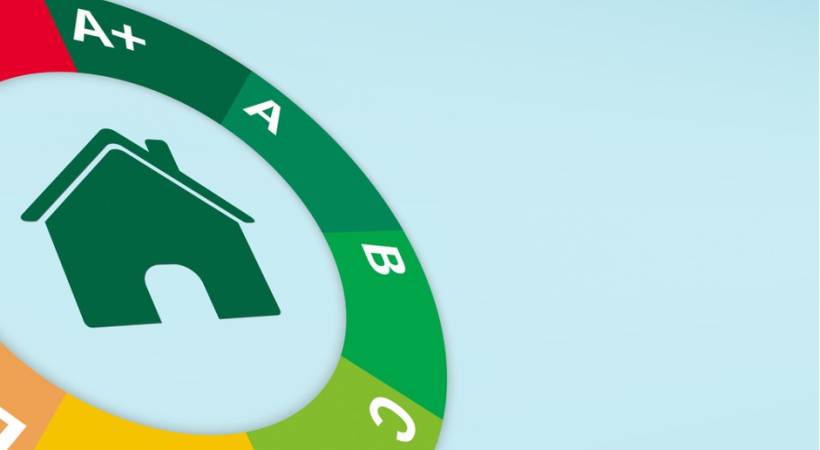
How Content Writers Can Benefit from Web Scraping

- Load 5 More Stories ▽
Contributors blogs
Blog here »

7 Best Ways to Prevent Accounts Payable Fraud

Why Are People Turning to CBD Oil for Pain Management?

How Digital Signage Can Make Your Products Stand Out

How Vehicle Lettering, Graphics, and Wraps Boost Brand Promotions

Why You Should Promote Your Brand with Guerrilla Marketing Tactics

The Importance of Ethics While Implementing Digitalization

What to Consider Before Taking Your Business International
Like this content subscribe for updates.
EXPLORE MORE ...
News & Features ›

Entrepreneurs Risk Prosecution for Incorrect Gov’t WFH Support Claims
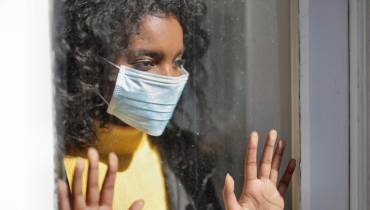
Stay Productive in Lockdown: Business Leaders Share their Best Tips

New Research Shows Over a Third of Brits Still Find Running a Business Attractive Despite COVID

Tech & Trends ›

Why Flutter Is the Best Solution for Mobile App Development
![how to use critical thinking in writing Featured Image - [node:title]](https://webwriterspotlight.com/sites/default/files/styles/video_thumbnail_bottom/public/considerations-when-outsourcing-business-lead_generation.jpg?itok=Gzp3OQBu)
Lead Generation Outsourcing: Key Considerations for Businesses

How to Conduct Proper Market Research for Web Development
Arts & culture ›.

Pros and Cons of Student Loan Forbearance

What Your Handwriting Says About You


10 Spectacular School Ball Themes for Prom

Business & Economy ›

8 Business Ideas You Can Start While in School

How to Write Persuasive Product Descriptions for Increased B2B Sales

6 Telltale Signs It's Time to Move Your Blog to Better Web Hosting

Health & Style ›

Why You Should Avoid Drinking Ice-Cold Water
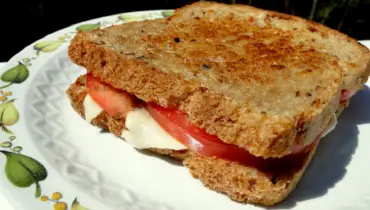
Making the Perfect Toast Bread: Are DeLonghi Toasters Any Good?

How to Shape Your Child’s Eating Habits Positively from an Early Age
Want to create or adapt books like this? Learn more about how Pressbooks supports open publishing practices.
4 – Critical Writing

Critical writing depends on critical thinking. Your writing will involve reflection on written texts: that is, critical reading.
[Source: Lane, 2021, Critical Thinking for Critical Writing ]
Critical writing entails the skills of critical thinking and reading. At college, the three skills are interdependent, reflected in the kinds of assignments you have to do.
Now let’s look at some real university-level assignments across different majors. Pay attention to the highlighted words used in the assignment descriptions.
As you can tell, all the assignments have both critical reading and writing components. You have to read a lot (e.g., “Use at least 5 current Economics research articles,” “refer to 2 other documents,” and “Select 4-5 secondary sources”) and critically before you form your own opinions and then start to write. Sometimes reading is for ideas and evidence (i.e., reasons, examples, and information from sources), and other times reading is to provide an evaluation of information accuracy (e.g., research designs, statistics). Without critical thinking and reading, critical writing will have no ground. Critical thinking and reading are the prerequisites for critical writing. A clear definition of critical writing is provided below.
What is Critical Writing?
Critical writing is writing which analyses and evaluates information, usually from multiple sources, in order to develop an argument. A mistake many beginning writers make is to assume that everything they read is true and that they should agree with it, since it has been published in an academic text or journal. Being part of the academic community, however, means that you should be critical of (i.e. question) what you read, looking for reasons why it should be accepted or rejected, for example by comparing it with what other writers say about the topic, or evaluating the research methods to see if they are adequate or whether they could be improved.
[Source: Critical Writing ]
If you are used to accepting the ideas and opinions stated in a text, you have to relearn how to be critical in evaluating the reliability of the sources, particularly in the online space as a large amount of online information is not screened. In addition, critical writing is different from the types of writing (e.g., descriptive writing) you might have practiced in primary and secondary education.
The following table gives some examples to show the difference between descriptive and critical writing (adapted from the website ). Pay attention to the different verbs used in the Table for the comparisons.
You might feel familiar with the verbs used in the column describing critical writing. If you still remember, those words are also used to depict the characteristics of critical thinking and reading.
ACTIVITY #1:
Read the two writing samples, identify which one is descriptive writing and which one is critical writing, and explain your judgment.
Sample 1: Recently, President Jacob Zuma made the decision to reshuffle the parliamentary cabinet, including the firing of finance minister, Pravin Gordhan. This decision was not well received by many South Africans.
Sample 2: President Zuma’s firing of popular finance minister, Gordhan drastically impacted investor confidence. This led to a sharp decrease in the value of the Rand. Such devaluation means that all USD-based imports (including petrol) will rise in cost, thereby raising the cost of living for South Africans, and reducing disposable income. This puts both cost and price pressure on Organisation X as an importer of USD-based goods Y, requiring it to consider doing Z. Furthermore, political instability has the added impact of encouraging immigration, particularly amongst skilled workers whose expertise is valued abroad (brain drain).
[Source: Jansen, 2017, Analytical Writing vs Descriptive Writing ]
Further, to write critically, you also have to pay attention to the rhetorical and logical aspects of writing:
Writing critically involves:
- Providing appropriate and sufficient arguments and examples
- Choosing terms that are precise, appropriate, and persuasive
- Making clear the transitions from one thought to another to ensure the overall logic of the presentation
- Editing for content, structure, and language
An increased awareness of the impact of choices of content, language, and structure can help you as a writer to develop habits of rewriting and revision.
Regarding the content, when writing critically, you cannot just rely on your own ideas, experiences, and/or one source. You have to read a wide range of sources on the specific topic you are exploring to get a holistic picture of what others have discussed on the topic, from which you further make your own judgment. Through reading other sources, you not only form your own judgment and opinions but also collect evidence to support your arguments. Evidence is so important in critical writing. In addition to the collection of evidence, you also need to use different ways (e.g., quoting, paraphrasing, and synthesizing) to integrate the evidence into your writing to increase your critical analysis.
Using quotes is always an issue. Some students like to quote a lot and/or too long throughout their papers, and others do not know why they quote. Remember that when you use direct quotations, you are using others’ ideas, not yours. You should limit the use of quotes to the minimum because readers are always interested in your opinions. In other words, you need to use quotes critically.
When you quote directly from a source, use the quotation critically. This means that you should not substitute the quotation for your own articulation of a point. Rather, introduce the quotation by laying out the judgments you are making about it, and the reasons why you are using it. Often a quotation is followed by some further analysis.
[Source: Knott , n.d., Critical Reading Towards Critical Writing ]
Barna (2017) stated that “A good rule of thumb is that the evidence should only be about 5-10% of the piece.” Further, according to the EAP Foundation.org , you need to avoid doing a laundry list in critical writing:
You cannot just string quotes together (A says this, B says that, C says something else), without looking more deeply at the information and building on it to support your own argument.
This means you need to break down the information from other sources to determine how the parts relate to one another or to an overall structure or purpose [analysing], and then make judgements about it, identifying its strengths and weaknesses, and possibly ‘grey areas’ in between, which are neither strengths nor weaknesses [evaluating]. Critical reading skills will help you with this, as you consider whether the source is reliable, relevant, up-to-date, and accurate.
When and Why do you quote?
When should you use quotes?
Using quotations is the easiest way to include source material, but quotations should be used carefully and sparingly. While paraphrasing and summarizing provide the opportunity to show your understanding of the source material, quoting may only show your ability to type it.
Having said that, there are a few very good reasons that you might want to use a quote rather than a paraphrase or summary:
- Accuracy: You are unable to paraphrase or summarize the source material without changing the author’s intent.
- Authority: You may want to use a quote to lend expert authority for your assertion or to provide source material for analysis.
- Conciseness: Your attempts to paraphrase or summarize are awkward or much longer than the source material.
- Unforgettable language: You believe that the words of the author are memorable or remarkable because of their effectiveness or historical flavor. Additionally, the author may have used a unique phrase or sentence, and you want to comment on words or phrases themselves.
When you decide to quote, be careful of relying too much upon one source or quoting too much of a source and make sure that your use of the quote demonstrates an understanding of the source material. Essentially, you want to avoid having a paper that is a string of quotes with occasional input from you.
[Source: Decide when to Quote, Paraphrase and Summarize ]
How do you quote?
- With a complete sentence
- With “according to”
- With a reporting verb
- With a “that” clause
- As part of your sentence
Citing the islands of Fiji as a case in point, Bordo notes that “until television was introduced in 1995, the islands had no reported cases of eating disorders. In 1998, three years after programs from the United States and Britain began broadcasting there, 62 percent of the girls surveyed reported dieting” (149-50). Bordo’s point is that the Western cult of dieting is spreading even to remote places across the globe.
[Source: Lane, 2020, Quoting: When and How to Use Quotations ]
The firm belief which has been widely advertised is that “international students should be given equal rights and respect while studying abroad” (Lane, 2020, p. 19).
Smith, an agent working at an international company, put forward the seriousness of economic recession brought by the COVID-19 pandemic: “our economy will soon collapse, followed by business failures, elevated unemployment, and social turbulence ” (2021, p. 87).
Dominguez (2002) suggested, “teachers should reflect on their teaching constantly and proactively” to avoid teacher burnout and attrition (pp. 76-79).
According to the IEP student manual, “To study in the IEP you must be 18 years old and your English level must be ‘high beginner’ or higher” (p. 6).
[Source: Five Ways to Introduce Quotations ]
Now move on to the language aspect of critical writing, you should pay attention to the analytical verbs used in critical writing.
Analytical verbs are verbs that indicate critical thinking. They’re used in essays to dissect a text and make interpretive points, helping you to form a strong argument and remain analytical. If you don’t use analytical verbs, you may find yourself simply repeating plot points, and describing a text, rather than evaluating and exploring core themes and ideas.
[Source: What are Analytical Verbs? ]
The use of analytical verbs is also important to show your precision and appropriateness in language use. For example, instead of using says and talks, replace those verbs with states, discusses, or claims. Not only does it enhance the formality of the language, but also it helps to create the tone of writing. This further means that you have to understand the specific meaning, purpose, and function of each verb in a specific context as shown in the table below.
[Source: Impressive Verbs to use in your Research Paper ]
The verbs listed under each category are NOT synonyms and are different based on context. Please ensure that the selected verb conveys your intended meaning.
It is recommended that you check out Academic Phrasebank for more advanced and critical language use.
The accuracy of language use that is important for critical writing is also reflected in the use of hedges .
Hedging is the use of linguistic devices to express hesitation or uncertainty as well as to demonstrate politeness and indirectness.
People use hedged language for several different purposes but perhaps the most fundamental are the following:
- to minimize the possibility of another academic opposing the claims that are being made
- to conform to the currently accepted style of academic writing
- to enable the author to devise a politeness strategy where they are able to acknowledge that there may be flaws in their claims
[Source: What Is Hedging in Academic Writing?]
There are different types of hedges used in writing to make your claim less certain but more convincing. For example, what is the difference between the two sentences as shown below?
No hedging: We already know all the animals in the world.
With hedging: It’s possible that we may already know most animals in the world.
[Source: Hedges and Boosters ]
Check this table for different types of hedges.
[Source: Features of academic writing]
Practice how to tone down the arguments.
ACTIVITY #2
Add hedges to the following arguments.
Except for the content and language aspects of critical writing, the last aspect is the organization, including both the overall structure and the paragraph level.
Here is one example of a critical writing outline.
One easy-to-follow outline format is alphanumeric, which means it uses letters of the alphabet and numbers to organize text.
For example:
- Hook: _____________________
- Transition to thesis: _____________________
- Thesis statement with three supporting points:_____________________
- Topic sentence: _____________________
- Evidence (data, facts, examples, logical reasoning): _____________________
- Connect evidence to thesis: _____________________
- Restate thesis: _____________________
- Summarize points: _____________________
- Closure (prediction, comment, call to action): _____________________
[Source: Academic Writing Tip: Making an Outline ]
1. Introduction
- Thesis statement
2. Topic one
- First piece of evidence
- Second piece of evidence
3. Topic two
4. Topic three
5. Conclusion
- Summary/synthesis
- Importance of topic
- Strong closing statement
[Source: Caulfield, 2021, How to Write an Essay Outline]
ACTIVITY #3:
The following essay was adapted from a student’s writing. Please identify the components of each paragraph.
Artificial Intelligence: An Irreplaceable Assistant in Policy-making
Do you understand artificial intelligence (AI)? Are you excited that humans can create these machines that think like us? Do you ever worry that they develop too advanced to replace humans? If you have thought about these questions, you are already in the debate of the century. AI is a term used to describe machine artifacts with digital algorithms that have the ability to perceive contexts for action and the capacity to associate contexts to actions (Bryson & Winfield, 2017). The 21st century has witnessed a great number of changes in AI. As AI shows its great abilities in decision-making, humans are relying more on AI to make policies. Despite some concerns about the overuse of AI, AI is no longer to be replaced in policy-making because it has the capabilities that humans cannot achieve, such as transparent decision-making and powerful data processing.
AI has the capacity to use algorithms or systems to make the decision-making process more transparent (Walport & Sedwill, 2016). Many decisions made by humans are based upon their intuition rather than the direct result of the deliberate collection and processing of information (Dane et al., 2012). Intuition is useful in business when considering the outcome of an investment or a new product. However, in politics, the public would often question whether the policy is biased, so a transparent decision-making process should be used instead of intuition. AI can make political decisions more transparent by visualizing digital records (Calo, 2017). AI can make decisions without any discrimination and can have the public better understand of the policies.
In addition, AI can process a large amount of information at a speed faster than the cognitive ability of the most intelligent human policymakers (Jarrahi, 2018). A qualified policy must be based on facts reflected by data, so researching data is an essential part of policy-making. There are two main challenges for the human decision-makers in this area: (1) The amount of data is too large and (2) the relationship between data is too complex. Handling these two problems is where AI is superior. The high computing power of AI makes it an effective tool for retrieving and analyzing large amounts of data, thus reducing the complexity of the logic between problems (Jarrahi, 2018). Without AI, the policymakers would be overwhelmed by tons of data in this modern information age. It is almost impossible for them to convert those data into useful information. For example, data provided to the politician who is responsible for health care is mostly from the electronic health record (HER). HER is just the digital record transported from paper-based forms (Bennett et al., 2012). AI can analyze the data to generate clinical assessments, symptoms, and patient behavior and then link that information with social factors such as education level and economic status. According to the information from AI, the policy maker can make policies for healthcare improvement (Bennett et al., 2012). With the assistance of AI, the government can not only collect data easier but also utilize those data as operable Information.
However, while AI shows its great abilities in policy-making, it also brings considerable risks to contemporary society, and the most significant one is privacy. The only source for AI systems to learn human behavior is data, so AI needs to collect enormous quantities of information about users in order to perform better. Some scholars claim that the main problem with AI data collection is the use of data for unintended purposes. The data is likely to be processed, used, or even sold without the users’ permission (Bartneck et al, 2021). The 2018 Cambridge Analytica scandal showed how private data collected through Facebook can be used to manipulate elections (Bartneck et al, 2021). While privacy is a crucial problem, this is a handleable problem and we cannot deny the benefits brought by using AI. The most appropriate way to solve this problem is to establish a complete regulatory system. In fact, many policies have been made to protect user privacy in AI data collection. One of safeguard in this area is to restrict the centralized processing of data. Researchers are also conducting a lot of research in this area and have achieved some technological breakthroughs. For example, open-source code and open data formats will allow a more transparent distinction between private and transferable information, blockchain-based technologies will allow data to be reviewed and tracked, and “smart contracts” will provide transparent control over how data is used without the need for centralized authority (Yuste & Goering, 2017).
In conclusion, although there may be some privacy-related issues with AI policies, the powerful data collection capabilities and transparent decision-making process of AI will bring many benefits to humans. In the future, AI is more likely to continue to serve as an assistant to humans when making policies under a complete and strict regulatory system.
Bartneck, Christoph. Lütge, Christoph. Wagner, Alan. Welsh, Sean. (2021). Privacy Issues of AI, pp.61-70. DOI: 10.1007/978-3-030-51110-4_8.
Bennett C, Doub T, Selove R (2012) EHRs Connect Research and Practice: Where Predictive Modeling, Artificial Intelligence, and Clinical Decision Support Intersect https://arxiv.org/ftp/arxiv/papers/1204/1204.4927.pdf. Accessed 1 April 2021.
Bryson J and Winfield A (2017) Standardizing Ethical Design Considerations for Artificial Intelligence and Autonomous Systems. http://www.cs.bath.ac.uk/~jjb/ftp/BrysonWinfield17-oa.pdf. Accessed 1 April 2021.
Calo, R (1993) Artificial Intelligence Policy: A Primer and Roadmap. https://lawreview.law.ucdavis.edu/issues/51/2/Symposium/51-2_Calo.pdf , Accessed 1 April 2021.
Dane, Erik., Rockmann, Kevin. W., & Pratt, Michael G. (2012). When should I trust my gut? Linking domain expertise to intuitive decision-making effectiveness. Organizational Behavior and Human Decision Processes, 119(2), 187—194.
Jarrahi, M. (2018). Artificial intelligence and the future of work: Human-AI symbiosis in organizational decision making, Business Horizons, Volume 61, Issue 4, Pages 577-586, ISSN 0007-6813, https://doi.org/10.1016/j.bushor.2018.03.007.
Walport M, & Sedwill M. (2016). Artificial intelligence: opportunities and implications for the future of decision making. https://assets.publishing.service.gov.uk/government/uploads/system/uploads/attach ment_data/file/566075/gs-16-19-artificial-intelligence-ai-report.pdf, Accessed 1 April 2021.
Rafael, Y., & Sara, G. (2017). Four ethical priorities for neurotechnologies an AI https://www.nature.com/news/four-ethical-priorities-for-neurotechnologies-and-ai 1.22960. Accessed 1 April 2022.
Apart from the overall structure of critical writing, it is also important to pay attention to the paragraph-level structure. There are different paragraph models for critical writing.
Model 1: TED model for writing critical paragraphs
Paragraph model for critical writing
Often in assignments, you are expected to critically evaluate – this means to assess the relevance and significance of concepts relating to a specific topic or assignment question. Introduce your point. Give examples from reading. Is there support for your argument or can you identify weaknesses? Are there different perspectives to compare and contrast? Build your explanation and create your objective, reasoned argument (case or thesis) based on the evaluation from different perspectives. You will include your conclusion and point of view, communicating your stance, having made a judgment on research you have found and its significance in contributing to answering your assignment question.
Use the TED model to integrate critical thinking into your writing:
Each example of evidence in your writing should have a clear purpose or function. Be explicit and tell the reader what it contributes to your reasoning.
Professional practice is more complex than simply applying theory to practice, since it involves a professional juggling of situational demands, intuition, experiences and knowledge (Schön, 1991). Practitioners do not apply research findings in a simple deductive process; they need time to think, translate and relate the research findings to their particular setting. The extent to which a given piece of evidence is utilised by an individual in practice depends on their sense of the situation and this inevitably involves professional judgement.
Topic (in red); Evidence (in orange); Further explanation (in blue); Discussion (in green)
Model 2: WEED model for writing critical paragraphs
This is a model for writing critical paragraphs. It’s taken from Godwin’s book called ‘Planning your Essay’. Each paragraph should be on a single topic, making a single point. A paragraph is usually around a third of a page.
W is for What
You should begin your paragraph with the topic or point that you’re making so that it’s clear to your lecturer. Everything in the paragraph should fit in with this opening sentence.
E is for Evidence
The middle of your paragraph should be full of evidence – this is where all your references should be incorporated. Make sure that your evidence fits in with your topic.
E is for Examples
Sometimes it’s useful to expand on your evidence. If you’re talking about a case study, the example might be how your point relates to the particular scenario being discussed.
D is for Do
You should conclude your paragraph with the implications of your discussion. This gives you the opportunity to add your commentary, which is very important in assignments that require you to use critical analysis. So, in effect, each paragraph is like a mini-essay, with an introduction, main body, and conclusion.
Example: a good critical paragraph
Exposure to nature and green spaces has been found to increase health, happiness, and wellbeing. Whilst trees and greenery improve air quality by reducing air pollutants, green spaces facilitate physical activity, reduce stress, and provide opportunities for social interaction (Kaplan, 1995; Lachowycz,and Jones, 2011; Ward Thompson et al., 2012; Hartig et al., 2014; Anderson et al., 2016). Older adults have described increased feelings of wellbeing while spending time in green spaces and walking past street greenery (Finaly et al., 2015; Orr et al., 2016). They are more likely to walk on streets which are aesthetically pleasing (Lockett, Willis and Edwards, 2005) while greenery such as flowers and trees play an important role in improving the aesthetics of the environment (Day, 2008). Therefore, greater integration of urban green spaces and street greenery in cities may have the potential to increase physical activity and wellbeing in older adults.
What (in red), Evidence (in orange), Do (in blue).
[Source: Learning Hub, 2021 ]
Please identify the paragraph-level components in the following paragraphs. You can use different colors to indicate different components.
Social Media plays a key role in slowing the spread of vaccine misinformation. According to Nikos-Rose (2021) from the University of California, individuals’ attitudes towards vaccination can negatively be influenced by social media. They can simply post a piece of misleading information to the public, and the deceived ones will share it with their families and friends. The role of media can also help boost the public’s confidence in the vaccination. The media can provide valuable information for the public to know that the vaccine is safe. Almost everyone in the modern era lives with a cell phone now. People on social media can also share their experiences after getting vaccinated. Influences can help boost the public’s confidence. Just as voters would receive “I voted” after casting their ballots, vaccination distribution sites can provide “I got vaccinated” stickers. This can encourage individuals to post on the media that they have received the vaccine (Milkman, 2020). Furthermore, those who spread misleading information should be fined by the authorities. This punishment would be sufficient for them to learn their lesson. People who oversee data and information in social media should be concerned about the spread of misleading information on social media. After deleting the false information, they should put up a notice stating that is fake. This will help the public to understand which information should be trusted or not. Moreover, people who find misleading information online should report it to the administration. This could help prevent false info from circulating on the internet.
Recent studies showed that the contamination of land and water can also negatively affect the production of crops and the food systems as the safety of products can be compromised by the chemicals used by fracking. In addition, the amount of freshwater required for the mixture of the fracking fluids can generate a lack of water supply to the local agricultural industries. The fresh water is the 90-97 % of the fracking fluids, and the water deployed is not possible to recycle efficiently. In fact, the wastewater became a further challenge to the agricultural sector as it can make the soil dry and unusable for crops (Pothukuchi et al. 2018). The challenges faced by the agricultural sector are reflected in the farmlands and livestocks as well. For example, in Pennsylvania, the Dairy farming is one of the major agricultural sectors. This particular sector requires unpolluted water and pasturelands to enable the cows to produce milk. Since 1996 this sector began to fail, but the largest decrease in cows that produce milk took place between 2007 and 2011. It was the exact same period when the fracking industries reached their peak in this area (Pothukuchi et al. 2018). Another piece of evidence is related to the air pollution caused by fracking, specifically, the pollution of agricultural pollinators such as bees. The population of air caused by fracking has led to a huge degradation of that volatiles endangering the local and global food production. Those outcomes are closely related to the low level of planning abilities in rural areas, where fracking usually takes place. Particularly, the gap between fracking industry actors and local officials didn’t allow the development of a proper level of policies and regulations.
References:
Academic writing tip: Making an outline. (2020, December 8). The International Language Institute of Massachusetts. Retrieved July 22, 2022, from https://ili.edu/2020/12/08/academic-writing-tip-making-an-outline/
Caulfield, J. (2021, December 6). How to Write an Essay Outline | Guidelines & Examples. Scribbr. Retrieved July 22, 2022, from https://www.scribbr.com/academic-essay/essay-outline/
Choudhary, A. (n.d.). Impressive Verbs to use in your Research Paper. Editage. Retrieved July 22, 2022, from https://www.editage.com/all-about-publication/research/impressive-Verbs-to-use-in-your-Research-Paper.html
Critical reading towards critical writing. (n.d.). University of Toronto. Retrieved July 22, 2022, from https://advice.writing.utoronto.ca/researching/critical-reading/
Critical writing. (n.d.). Teesside University. Retrieved July 22, 2022, from https://libguides.tees.ac.uk/ld.php?content_id=33286287
Critical writing. (n.d.-b). EAP FOUNDATION.COM. Https://www.eapfoundation.com/writing/critical/
Decide when to quote, paraphrase and summarize. (n.d.). University of Houston-Victoria. Retrieved July 22, 2022, from https://www.uhv.edu/curriculum-and-student-achievement/student-success/tutoring/student-resources/a-d/decide-when-to-quote-paraphrase-and-summarize/
Features of academic writing. (n.d.). UEFAP. Retrieved July 22, 2022, from http://www.uefap.com/writing/feature/hedge.htm
Five ways to introduce quotations. (n.d.). University of Georgia. Retrieved July 22, 2022, from https://dae.uga.edu/iep/handouts/Five-Ways-to-Introduce-Quotations.pdf
Jansen, D. (2017, April). Analytical writing vs descriptive writing. GRADCOACH. Retrieved July 22, 2022, from https://gradcoach.com/analytical-vs-descriptive-writing/
Hedges and Boosters. (n.d.). The Nature of Writing. Retrieved July 22, 2022, from https://natureofwriting.com/courses/introduction-to-rhetoric/lessons/hedges-and-boosters/topic/hedges-and-boosters
How to write critically. (n.d.). Teesside University. Retrieved July 22, 2022, from https://libguides.tees.ac.uk/ld.php?content_id=31275168
Lane, J. (2021, July 9). Critical thinking for critical writing. Simon Fraser University. Retrieved July 22, 2022, from https://www.lib.sfu.ca/about/branches-depts/slc/writing/argumentation/critical-thinking-writing
LibGuides: Critical Writing: Online study guide. (n.d.). Sheffield Hallam University. Retrieved July 22, 2022, from https://libguides.shu.ac.uk/criticalwriting
What are analytical verbs? (n.d.). Twinkl. Retrieved July 22, 2022, from https://www.twinkl.com/teaching-wiki/analytical-verbs
What is hedging in academic writing? (2022, May 3). Enago Academy. Retrieved July 22, 2022, from https://www.enago.com/academy/hedging-in-academic-writing/
Critical Reading, Writing, and Thinking Copyright © 2022 by Zhenjie Weng, Josh Burlile, Karen Macbeth is licensed under a Creative Commons Attribution 4.0 International License , except where otherwise noted.
Share This Book

- Study and research support
- Academic skills
Critical thinking
Critical writing.
Students sometimes receive feedback such as "your essay is too descriptive" or "you need to show more critical analysis". While some description may be necessary – for instance if you are providing background information – most university assignments require you to produce work that is analytical and critical in its approach.
Your tutors want to know what you think
Your writing needs to show your interpretation of the evidence and source material, how you have used that information to demonstrate your understanding, and your subsequent position on the topic. Being critical in your writing means engaging in academic debates and research happening in your subject area.
The sources you select, the way you show how they agree or disagree with other pieces of evidence, and the way you structure your argument will all show your thought process and how you have understood the information you have read.
Use evidence to strengthen your position
Always keep your reader in mind and try to anticipate the questions they would ask — refer back to the Critical thinking questions (PDF) to help you with this. You can use evidence to help you strengthen your position, answer readers' questions, and "neutralise" opposing points of view.
Remember to keep descriptive statements to a minimum — there is no need to provide large amounts of background or historical information.
Make sure you move from description to analysis and evaluation . Give your interpretation of the facts, and explain the significance, consequences and implications of the statements you have made.
See our advice on structuring a paragraph for more information on how to attach analysis and evaluation to each point you make.
Descriptive vs critical writing examples
The following examples demonstrate the difference between descriptive writing and critical/analytical writing. They are taken from: Cottrell, S. 2003. The Study Skills Handbook . 2nd ed. London: Palgrave.
State what happened vs identify its significance
To write critically you will need to not only describe what happened, but also identify the significance of what happened.
Descriptive example
"The data shows that the incidence (new cases) of asthma rates in children under 15 years old increased rapidly from 1977, peaking in 1993 and then declining, though rates still remain significantly higher than pre-1976 levels."
Critical example
"The trend, from 1977 until 1993, of a rapid rise in rates of asthma diagnosis in children under 15 years, suggests that one of the causal factors was particularly prevalent during this time, but has since declined in importance or effect."
Explain the theory vs show its relevance
Descriptive writing will explain what the theory says. To write critically you need to go further and show why that theory is relevant.
"Carl Rogers' theory of a person-centred approach focuses on the freedom of the individual to determine what values should be used to measure successful personal outcomes or benefit, and is particularly relevant for social workers when wanting to take into account the diverse needs of the client group."
"Carl Rogers' theory of a person-centred approach is particularly suitable for social workers wanting to work with a client group with diverse needs because it allows the client to determine what values should be used to measure successful outcomes, rather than those externally determined by, for example, the service, state or dominant culture in society."
Note the method used vs indicate its appropriateness
Rather than simply noting the method used, which is the descriptive approach, a critical writer will show how appropriate that method was.
"In addition to competency-based questions, the candidates were asked to complete an in-tray exercise, which required them to allocate different priority levels to tasks, as an appropriate method to measure their likely performance in the actual job."
"In addition to competency-based questions, candidates were asked to complete an in-tray task prioritisation exercise. This was because it was considered a more effective way to measure likely performance in the actual role as the majority of the job would involve similar tasks, with little interaction with customers and therefore less requirement for highly developed communication skills."
You can apply our critical thinking model to your own work; use our Judging your own work (PDF) questions to help you decide if your writing is critical. These questions will take you through the description-analysis-evaluation stages. Take a look at further examples of descriptive writing vs. critical/analytical writing (PDF)
Reading & Writing Purposes
Introduction: critical thinking, reading, & writing, critical thinking.
The phrase “critical thinking” is often misunderstood. “Critical” in this case does not mean finding fault with an action or idea. Instead, it refers to the ability to understand an action or idea through reasoning. According to the website SkillsYouNeed [1]:
Critical thinking might be described as the ability to engage in reflective and independent thinking.
In essence, critical thinking requires you to use your ability to reason. It is about being an active learner rather than a passive recipient of information.
Critical thinkers rigorously question ideas and assumptions rather than accepting them at face value. They will always seek to determine whether the ideas, arguments, and findings represent the entire picture and are open to finding that they do not.
Critical thinkers will identify, analyze, and solve problems systematically rather than by intuition or instinct.
Someone with critical thinking skills can:
- Understand the links between ideas.
- Determine the importance and relevance of arguments and ideas.
- Recognize, build, and appraise arguments.
- Identify inconsistencies and errors in reasoning.
- Approach problems in a consistent and systematic way.
- Reflect on the justification of their own assumptions, beliefs and values.
Read more at: https://www.skillsyouneed.com/learn/critical-thinking.html

Critical thinking—the ability to develop your own insights and meaning—is a basic college learning goal. Critical reading and writing strategies foster critical thinking, and critical thinking underlies critical reading and writing.
Critical Reading
Critical reading builds on the basic reading skills expected for college.
College Readers’ Characteristics
- College readers are willing to spend time reflecting on the ideas presented in their reading assignments. They know the time is well-spent to enhance their understanding.
- College readers are able to raise questions while reading. They evaluate and solve problems rather than merely compile a set of facts to be memorized.
- College readers can think logically. They are fact-oriented and can review the facts dispassionately. They base their judgments on ideas and evidence.
- College readers can recognize error in thought and persuasion as well as recognize good arguments.
- College readers are skeptical. They understand that not everything in print is correct. They are diligent in seeking out the truth.
Critical Readers’ Characteristics
- Critical readers are open-minded. They seek alternative views and are open to new ideas that may not necessarily agree with their previous thoughts on a topic. They are willing to reassess their views when new or discordant evidence is introduced and evaluated.
- Critical readers are in touch with their own personal thoughts and ideas about a topic. Excited about learning, they are eager to express their thoughts and opinions.
- Critical readers are able to identify arguments and issues. They are able to ask penetrating and thought-provoking questions to evaluate ideas.
- Critical readers are creative. They see connections between topics and use knowledge from other disciplines to enhance their reading and learning experiences.
- Critical readers develop their own ideas on issues, based on careful analysis and response to others’ ideas.
The video below, although geared toward students studying for the SAT exam (Scholastic Aptitude Test used for many colleges’ admissions), offers a good, quick overview of the concept and practice of critical reading.
Critical Reading & Writing
College reading and writing assignments often ask you to react to, apply, analyze, and synthesize information. In other words, your own informed and reasoned ideas about a subject take on more importance than someone else’s ideas, since the purpose of college reading and writing is to think critically about information.
Critical thinking involves questioning. You ask and answer questions to pursue the “careful and exact evaluation and judgment” that the word “critical” invokes (definition from The American Heritage Dictionary ). The questions simply change depending on your critical purpose. Different critical purposes are detailed in the next pages of this text.
However, here’s a brief preview of the different types of questions you’ll ask and answer in relation to different critical reading and writing purposes.
When you react to a text you ask:
- “What do I think?” and
- “Why do I think this way?”
e.g., If I asked and answered these “reaction” questions about the topic assimilation of immigrants to the U.S. , I might create the following main idea statement, which I could then develop in an essay: I think that assimilation has both positive and negative effects because, while it makes life easier within the dominant culture, it also implies that the original culture is of lesser value.
When you apply text information you ask:
- “How does this information relate to the real world?”
e.g., If I asked and answered this “application” question about the topic assimilation , I might create the following main idea statement, which I could then develop in an essay: During the past ten years, a group of recent emigrants has assimilated into the local culture; the process of their assimilation followed certain specific stages.
When you analyze text information you ask:
- “What is the main idea?”
- “What do I want to ‘test’ in the text to see if the main idea is justified?” (supporting ideas, type of information, language), and
- “What pieces of the text relate to my ‘test?'”
e.g., If I asked and answered these “analysis” questions about the topic immigrants to the United States , I might create the following main idea statement, which I could then develop in an essay: Although Lee (2009) states that “segmented assimilation theory asserts that immigrant groups may assimilate into one of many social sectors available in American society, instead of restricting all immigrant groups to adapting into one uniform host society,” other theorists have shown this not to be the case with recent immigrants in certain geographic areas.
Critical Writing : A Guide to Writing a Paper Using the Concepts and Processes of Critical Thinking
Best source.
- Find full text or request
About this article
- Stanford Home
- Maps & Directions
- Search Stanford
- Emergency Info
- Terms of Use
- Non-Discrimination
- Accessibility
© Stanford University , Stanford , California 94305 .

- Search Search Search …
- Search Search …
Tips on How to Use Critical Thinking in Reading and Writing

Have you ever heard of the phrase, “to read between the lines?” It means digging deeper into the text you’ve just read, or not taking it at face value. Reading between the lines means understanding what you’ve read and making judgments based on what you’ve read.
Reading between the lines is reading with critical thinking . And this skill is an important asset to have, no matter what career or future you want in life. But what exactly is critical thinking and how can you use it in reading and writing?
Examples of Critical Reading
Critical reading is the use of critical thinking in reading. You’ll have most likely encountered this during your school years, when an exam lets you read a passage or essay and then asks you questions about the text you’ve just read.
A simple example of critical reading would be:
John came inside the house, dripping water from the top of his head down to the soles of his shoes.
Simple reading would tell you that: 1) There’s a person named John, 2) and he’s wet.
But using critical thinking in reading, you would know that: 1) There’s a person named John, 2) it’s raining outside, 3) he didn’t have an umbrella or raincoat.
The sentence about John never mentioned any rain or umbrellas, so how do you know what was going on? With the use of critical thinking, you made logical inferences based on the scenario and facts stated in the text.
Why is Critical Thinking Important in Reading and Writing?
Critical thinking is important because you’ll need it to decipher the nuances that are hidden within a simple text. Or, if you are writing to someone, you can tell something in a not-so straightforward manner. In creative fiction, this makes for a more unique and dynamic storytelling, which will be more enjoyable to the reader.
Critical thinking in reading and writing will also enhance and train your brain into using this skill in every day events. Critical thinking is also important in judging fact from opinion, and making your own opinions based on facts and logic.
How to Use Critical Thinking in Reading?
Here are some tips on how to use or train your brain into reading critically:
- Set Aside Your Judgments. Your personal thoughts and opinions might cloud your interpretation of the text. Approach it with an open mind and let the author speak to you through their words.
- Learn to Spot Factual Sources. Anyone can just post anything on the internet, and claim it as fact. The reason why so many people fall prey to hoaxes and unscientific claims is because they didn’t exercise critical thinking when reading. Learn how to differentiate facts from opinions by looking at the source(s). Are they credible? Are they backed by research or studies? Is there more than one source? Is it linking or quoting research, surveys, or studies?
- Do a Second (or Even Third) Reading. Have you ever experienced hearing a song and thinking the lyrics were one thing, but then you actually looked for the lyrics and found out it was completely different? Sometimes the true meaning can go completely unnoticed if you breeze through the text too quickly. The best thing to do is to read the text more than once. The first reading is to get a general understanding of the material or text. The next ones are for a more thorough analysis. Don’t breeze through your second reading.
- Question. Don’t take the text presented to you at face value. Question it, then find the answers within the text itself. Questions such as, “What is it that this text is really trying to tell? What are the things implied in the context? How are the things described in the text relate to each other?” By questioning the text, you can explore more of what the author wants to tell that were left unwritten.
- Interpret and Evaluate. If you have understood a piece of text, you’ll be able to rewrite it after reading. But that is simple reading. When you read with critical thinking skills, you’ll be able to interpret the text and add your own thoughts and opinions. For instance, in the example given above, you can interpret it as John has forgotten to bring an umbrella, and evaluate it as saying John is forgetful. Neither of these things were told in the text, but with critical reading, you’ll be able to make these assumptions.
How to Use Critical Thinking in Writing?
If you want your readers to use their critical thinking skills when reading your text, try the following tips:
- Don’t Underestimate Your Audience. Knowing your audience is the basic rule in writing. For them to understand you, you need to get on to their level and write as such. However, underestimating your audience is also something that will hinder critical reading. When you underestimate your audience, you’ll make things easy for them. For example, you’ll simply write “John forgot his umbrella and got wet in the rain” instead of the example given earlier. This might be okay if your audience are small children, but critical readers will get bored and frustrated.
- Show, Don’t Tell. This is something commonly used in creative fiction, but it can be useful in other kinds of writing, too. Showing rather than telling gives your readers the chance to analyze. For example, instead of simply telling your reader that John is sad, show your readers by saying something like, “John’s face darkened. The corners of his lips sagged. He trudged upstairs with heavy footsteps and locked himself in his bedroom, taking neither food nor drink for the night.” Which one made a clearer picture? The second passage never mentioned the phrase “John is sad,” yet the picture of a sad John is stronger within it.
- Plan Ahead and Draft Your Text. Much like having to read twice or thrice, planning and drafting before releasing the final text is the author’s way of analyzing their own writing. This is important in academic and business-related writings, because you’ll be able to gather all your evidence, line up your arguments, and present your case in a coherent flow.
- Have the Answer to All the Questions. Remember when you were advised to question the text so you can use critical thinking when reading? Well, your audience won’t be able to ask questions if you don’t have the answers. When planning out and drafting your work, make sure to answer these two questions: What is it that you’re really trying to say? And how are you going to show it?
- Leave a Bit of Elbow Room for Discussion. When doing opinionated pieces, don’t go too heavy-handed on your own opinions that it leaves your audience against a corner. State your opinion, based on facts and logical assumptions, but leave a bit of room so your readers can question, analyze, and decide for themselves if your opinions are right or otherwise. Much like showing than telling, creating an environment where readers can decide for themselves rather than shoving an opinion down their throats is the best way to use critical thinking in writing.
Critical thinking is a skill that can be used in so many aspects of life. This is why schools focus on developing and honing this skill early on. Two of the best ways to do this are by reading and writing.
Try the tips mentioned above the next time you read or write a piece. See if it makes you think critically!
You may also like

Best Movies for Critical Thinking: Top Picks to Challenge Your Mind
In today’s fast-paced world, movies have become an essential source of entertainment and learning, providing viewers with thought-provoking stories that challenge their […]

A Student’s Guide to Critical Thinking
In the past, classroom-based learning revolved on retaining and repeating any information given. Today, schools focus on teaching the skills to learn […]
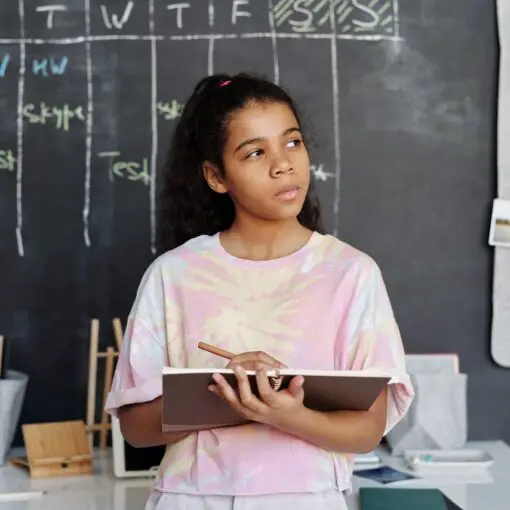
Fun Critical Thinking Activities
Learning to evaluate information, find credible sources, and prepare for counterarguments is an important skill for people to learn, especially in the […]

Best Ted Talks on Critical Thinking: Top Picks for Insightful Perspectives
Critical thinking is an essential skill in today’s fast-paced world, where making informed decisions is crucial for success. TED Talks, renowned for […]
- Search entire site
- Search for a course
- Browse study areas
Analytics and Data Science
- Data Science and Innovation
- Postgraduate Research Courses
- Business Research Programs
- Undergraduate Business Programs
- Entrepreneurship
- MBA Programs
- Postgraduate Business Programs
Communication
- Animation Production
- Business Consulting and Technology Implementation
- Digital and Social Media
- Media Arts and Production
- Media Business
- Media Practice and Industry
- Music and Sound Design
- Social and Political Sciences
- Strategic Communication
- Writing and Publishing
- Postgraduate Communication Research Degrees
Design, Architecture and Building
- Architecture
- Built Environment
- DAB Research
- Public Policy and Governance
- Secondary Education
- Education (Learning and Leadership)
- Learning Design
- Postgraduate Education Research Degrees
- Primary Education
Engineering
- Civil and Environmental
- Computer Systems and Software
- Engineering Management
- Mechanical and Mechatronic
- Systems and Operations
- Telecommunications
- Postgraduate Engineering courses
- Undergraduate Engineering courses
- Sport and Exercise
- Palliative Care
- Public Health
- Nursing (Undergraduate)
- Nursing (Postgraduate)
- Health (Postgraduate)
- Research and Honours
- Health Services Management
- Child and Family Health
- Women's and Children's Health
Health (GEM)
- Coursework Degrees
- Clinical Psychology
- Genetic Counselling
- Good Manufacturing Practice
- Physiotherapy
- Speech Pathology
- Research Degrees
Information Technology
- Business Analysis and Information Systems
- Computer Science, Data Analytics/Mining
- Games, Graphics and Multimedia
- IT Management and Leadership
- Networking and Security
- Software Development and Programming
- Systems Design and Analysis
- Web and Cloud Computing
- Postgraduate IT courses
- Postgraduate IT online courses
- Undergraduate Information Technology courses
- International Studies
- Criminology
- International Relations
- Postgraduate International Studies Research Degrees
- Sustainability and Environment
- Practical Legal Training
- Commercial and Business Law
- Juris Doctor
- Legal Studies
- Master of Laws
- Intellectual Property
- Migration Law and Practice
- Overseas Qualified Lawyers
- Postgraduate Law Programs
- Postgraduate Law Research
- Undergraduate Law Programs
- Life Sciences
- Mathematical and Physical Sciences
- Postgraduate Science Programs
- Science Research Programs
- Undergraduate Science Programs
Transdisciplinary Innovation
- Creative Intelligence and Innovation
- Diploma in Innovation
- Transdisciplinary Learning
- Postgraduate Research Degree
How to write critically
What is critical writing.
Critical writing involves:

- analysing information to understand a problem or topic from more than one perspective;
- making logical connections between ideas;
- offering your own perspective on the topic based on your evaluation of the available evidence
How is critical writing different from descriptive writing?
Example paragraphs.
The following examples compare a paragraph using only descriptive writing with the same paragraph rewritten to include the writer’s critical analysis of the topic.
Descriptive Writing There is a large amount of research that examines intercultural communication via social media . Smith (2016, p. 75) states that digital platforms such as Facebook and Twitter help distribute knowledge between people and cultures. Cosgrove (2018) found that people who regularly used social media were more likely to engage in activities from other cultures. Harrison (2017, p. 9) believes that technology has increased the capacity for people to communicate across cultures. Furthermore, Harrison states that social media does not foster in-depth relationships between people and communities from different cultures. Moreover, Markson (2018, p. 18) argues that digital communication platforms “erode the fundamental principles of cross-cultural engagement” by reducing important and complex aspects of culture to “ instant images … for immediate gratification rather than deep understanding."
Critical Writing Research indicates that while digital communication has enhanced the capacity of people to connect across cultures, there are limitations regarding how this communication translates to genuine connection . Smith (2016, p. 75) suggests that digital platforms such as Facebook and Twitter not only benefit users in terms of social connectivity, but also help distribute knowledge between people and cultures. Similarly, Cosgrove (2018) found that people who regularly used social media were more likely to engage in activities from other cultures. While Harrison (2017, p. 9) agrees that technology has increased the capacity for people to communicate across cultures, he raises concerns that such forms of communication fail to “foster in-depth relationships” between people and communities from different cultures, because strong connections require situations to be experienced together. Markson (2018, p. 18) likewise warns that digital communication platforms “erode the fundamental principles of cross-cultural engagement” by reducing important and complex aspects of culture to “instant images … for immediate gratification rather than deep understanding.” It is this superficial nature of social media that prevents it from being a truly useful tool for enhancing cross-cultural connection. Further research is required to examine how social media might more effectively encourage meaningful intercultural connections.

Back to top
UTS acknowledges the Gadigal people of the Eora Nation, the Boorooberongal people of the Dharug Nation, the Bidiagal people and the Gamaygal people, upon whose ancestral lands our university stands. We would also like to pay respect to the Elders both past and present, acknowledging them as the traditional custodians of knowledge for these lands.

You are using an outdated browser. Upgrade your browser today or install Google Chrome Frame to better experience this site.
- Professional learning
Teach. Learn. Grow.
Teach. learn. grow. the education blog.

Anchor your writing instruction in big ideas students can remember
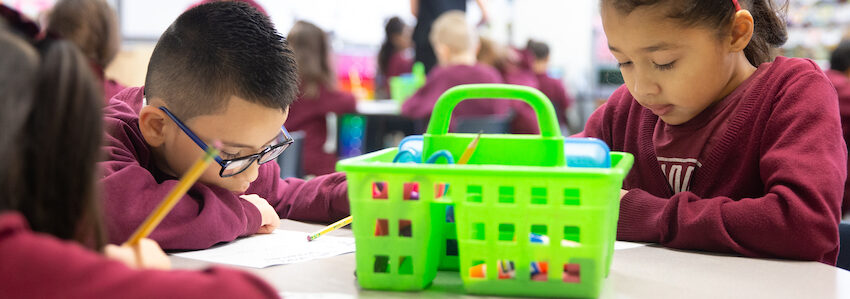
Years later, when one of my journalism students won a Los Angeles Times award for news writing, I thought more deeply about the instructional changes I had made. I also thought about the social and emotional factors that likely enabled this once-timid reporter to tackle tough issues and blossom into an adept writer. What I realized from this exercise is that many of my instructional shifts had more to do with “leaning in” and getting to know my student as a writer, along with “letting go” of some outdated notions about what good writing is.
These are the three most important lessons I learned that I’d like to pass along.
Lesson #1: Writing instruction begins with a shared language for talking about writing and a shared understanding of the purposes for writing
Anchoring your instruction in a few big ideas that students can remember helps simplify the experience for everyone—and writing is always an experience.
As a new English language arts teacher, I often made writing more complicated than it needed to be. In my journalism classes, things were simple: we focused on the 5Ws and H (who? What? When? Where? Why? How?). It was easy for every student to remember and internalize these guiding questions.
If only there were a similar list of questions I could apply to other writing tasks! Over time, I found that there was. And at NWEA, I’ve had the opportunity to collaborate with current and former teachers to hone that list of essential questions down to the following five.
If anchoring your instruction in big ideas students can remember resonates with you, like it did for me, I encourage you to try incorporating these five essential questions into your writing curriculum.
We’ve even compiled these big ideas for growing writers into a free resource aimed at building a shared language for talking about writing with students. To that end, we’ve created a student version , too.
1. Why am I writing?
This question encourages students to ponder their purpose for writing. Often, their immediate response to this question is, “I’m writing because my teacher assigned me this essay/report/research paper.”
If we can get students to push past the idea of writing as an assignment and toward writing as a form of communication, we may see a dramatic increase in their motivation and writing quality. “What do you want to accomplish with this piece of writing?” becomes the question, not “What kind of writing does your teacher want from you?”
Writing is always the intellectual product of the writer, and the more we can encourage students to see themselves as writers and to take ownership of their writing, the better the results. Before students write, it’s critical they know and understand their purpose for writing, as this purpose informs so many other choices they will make.
2. Who are my readers?
This question forces students to consider their audience . When writers can anticipate the needs of their audience, they increase the effectiveness of their communication.
If the only audience a student ever has for their writing is a teacher, they lose the opportunity to make writerly decisions based on different audiences, such as considering their unique feelings and opinions about a topic, their different vocabularies (e.g., familiarity with code switching, idioms, or jargon), and their varying degrees of background knowledge. This is why giving students authentic writing tasks is so important . Authentic writing engages students in the same cognitive processes they use to write for real-world situations, such as applying for a job, taking civic action, or even communicating with family and friends.
3. What am I writing?
This question gets students to think more deeply about the task , genre , and form for their writing. While some of this information is likely included in the writing assignment, it’s still important for students to work through the task details on their own.
Students will make more informed writing decisions when they are able to clearly articulate the expectations and success criteria for a writing task . The writing genre provides another framework for students to think about their purpose for writing. Each genre’s unique features have developed over time through socially agreed-upon conventions, and experienced writers understand how to use these features to communicate more clearly with their audiences. Finally, form —or format—describes the type of text to be produced, and today’s writers have more forms to choose from—both analog and digital—than ever before.
When students put time and thought into their purpose, audience, and task, they have a greater command over their writing and what they want it to accomplish. And that’s when we get to see students’ communication skills and creativity truly shine through.
4. How am I presenting ideas in my writing?
This question addresses the myriad of choices a writer must make when they embark on a task, including decisions about writing development , organization , style , and conventions . Too often, this is where we ask students to start, and it can be overwhelming to make all these decisions before a student has wrapped their head around what they plan to write and why. In addition, while these writerly decisions are important, we may place too great an emphasis on a student’s final written product when a focus on their writing process may have more instructional utility.
My advice to students is, “Don’t sweat the small stuff when it comes to presenting ideas in your writing.” The ideas themselves are what’s most important. They’ll have numerous opportunities to practice and hone their writing development, organization, style, and conventions with every piece they write and over an entire lifetime.
5. How am I using the writing process?
This question reminds students that writing is both a product and a process . And the writing process is where much of the learning and critical thinking takes place.
Though writing is often taught as a sequence of forward-moving steps, the writing process is recursive and iterative, not linear . For example, writers go back and forth between planning, drafting, translating, reviewing, and revising to meet their writing goals, and writing goals can be self-generated or revised at any time during the writing process.
Writing itself is a work in progress that includes collaboration, self-regulation, and self-evaluation in addition to the other steps students typically learn. The more frequently students engage in and reflect on their own writing process, the more likely they are to develop productive and efficient writing habits, as well as growth mindsets that can help them overcome writing challenges in their school, career, and personal lives.
Lesson #2: Writing instruction is most impactful when it extends through professional learning communities (PLC) that offer students school-wide support for writing
As students move from grade to grade, a strong and coordinated PLC can help them build on what they already know about writing and focus on becoming even more expressive and effective writers.
In my first year of teaching, a colleague and I had an opportunity to attend a professional learning summit on writing. One session led by Harry Noden taught us how his Image Grammar could help students expand, vary, and improve their sentence structures. The majority of our student population was multilingual learners, and we rightly suspected that focused practice on writing, even at the sentence level, could increase language development in English . In part, this is because writing has a slower pace, provides a permanent record, and calls for greater precision in word choice.
We accurately assumed that sentence writing would benefit all our students , too. And once we were satisfied with the results, we leveraged our PLC to encourage a school-wide adoption of teaching grammar with Noden’s “brushstrokes.” We saw students quickly embrace the concept of “brushstrokes” because it positioned them as “artists” painting with words. This artistry was reinforced by the quality of their sentence writing. Often shared aloud, these sentences could be chill inducing they were so beautiful. For many students, this was their first proof they could be excellent writers, once they learned how.
Lesson #3: Writing outcomes can be improved through the use of common assessments and common rubrics at the school, district, or even state level
Common assessments and common rubrics help educators develop a shared understanding of how to evaluate writing. This includes providing students with meaningful feedback and grading writing more consistently across a school, district, or even state.
Coordination among teachers can help establish a school-wide writing community that all students can tap into for peer review. It can also lead to greater consistency in writing instruction and evaluation. Such consistency builds trust between students and teachers, which in turn can strengthen students’ view of themselves as learners and increase their motivation to learn .
When students don’t have to figure out individual teacher preferences for writing—and they feel confident every teacher will grade their writing for substance not style—they can focus their mental energy on becoming better writers. This includes developing their own sense of how to use language(s) effectively for personal, academic, and civic purposes.
One way to foster student-teacher collaboration is to encourage students to enter writing contests . Student writing contests can range from local to national, and it’s worth some extra effort to find ones that are a good fit for your students. Once my journalism students began entering (and winning!) writing contests, these events became an annual tradition. My students also became more willing to work on their digital portfolios throughout the year.
At the district level, common assessments and common rubrics can help leaders identify schools that need more support, such as more professional learning for educators or more high-dosage tutoring for students . They can also identify schools that have model instruction and can serve as resources for others. If you’re looking for a place to start in your district, the Literacy Design Collaborative offers common analytic rubrics for several writing genres , and the New York Performance Standards Consortium provides a robust set of performance-based assessments and rubrics .
Districts that use state rubrics in their common writing assessments help ensure all educators have similar expectations of student writing. If your state assesses writing, check the state department of education website for newly released writing assessments and their accompanying rubrics. And if your state doesn’t assess writing, they may still offer writing materials for teachers to use.
Finally, NWEA is often asked about the connection between MAP® Growth™ and writing. MAP Growth does not include writing prompts, so it can’t take the place of high-quality formative assessment in the classroom ; it simply wasn’t designed to assess students’ writing. But MAP Growth can provide insights into students’ strengths and opportunities for growth, and these insights are especially helpful when educators use an integrated approach to reading and writing instruction.
The MAP Growth instructional areas for reading, for example, offer some information about how well students understand literary text, informational text, and vocabulary. Students who are performing below grade-level for vocabulary would likely benefit from more explicit vocabulary instruction, including more strategic exposure to roots and affixes. This expanded vocabulary knowledge can later be applied to students’ writing. One approach is to have students “speak in synonyms,” a kind of oral rehearsal that can be done with peers or small groups and then integrated into a piece of student writing. Meanwhile, students who struggle to comprehend informational text might benefit from a self-regulated strategy development (SRSD) approach to writing . This method teaches students to recognize, internalize, and utilize important genre features in writing. And since reading and writing are related, SRSD can help improve students’ comprehension of informational texts, too.
A recap of lessons learned
Writing is hard, and teaching writing may be harder still. As educators, we continually learn new lessons about how to help our students (and ourselves) become better writers. I hope the three lessons I’ve shared here are helpful to you and bring you closer to having every student see themselves as a capable writer or, better yet, an artist painting with words.
Recommended for you

The science of teaching reading comprehension

6 strategies for teaching multisyllabic word reading
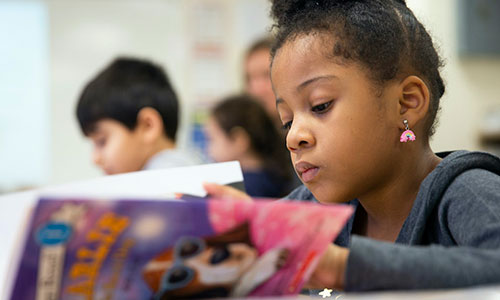
The science of reading explained

Helping students grow
Students continue to rebound from pandemic school closures. NWEA® and Learning Heroes experts talk about how best to support them here on our blog, Teach. Learn. Grow.
See the post

Put the science of reading into action
The science of reading is not a buzzword. It’s the converging evidence of what matters and what works in literacy instruction. We can help you make it part of your practice.
Get the guide

Support teachers with PL
High-quality professional learning can help teachers feel invested—and supported—in their work.
Read the article
STAY CURRENT by subscribing to our newsletter
You are now signed up to receive our newsletter containing the latest news, blogs, and resources from nwea..
11.1 Developing Your Sense of Logic
Learning outcomes.
By the end of this section, you will be able to:
- Identify key rhetorical concepts and thought patterns in a variety of texts.
- Explain how patterns of thought function for different audiences, purposes, and situations.
For the purposes of this course, logic means “reasoning based on thought and evidence.” In practical terms, logic is the ability to analyze and evaluate persuasive or argument writing for effectiveness. By extension, it also means that you can learn to use logic in your own argumentative writing. Like any other new skill, you are likely to learn best when you have a starting point. Here are some suggestions for how to begin thinking and writing logically:
- Approach a topic with an open mind.
- Consider what you already know about the topic.
- Consider what you want to know about the topic.
- Find credible information about the topic.
- Base your judgments of the topic on sound reasoning and evidence.
Once you have formed your opinions on a particular debatable subject, you must decide on the best way to organize them to share with others. Developing your skills in six widely used reasoning strategies , or patterns for thinking and writing, can help you determine the most logical and effective means of organizing information to make your points.
In this chapter, you will examine these six reasoning strategies—analogy, cause and effect, classification and division, comparison and contrast, problem and solution, and definition—that are often used in college classes. In addition, you will consider how writers’ personal views, cultural backgrounds, and purposes for writing help determine
- which reasoning strategy suits their needs; and
- what they decide to include in their writing.
As you progress in your college classes and beyond, you will find these reasoning strategies used in all genres of writing, both nonfiction (e.g., textbooks, how-to books) and fiction (e.g., novels, short stories). Understanding how these strategies work can help you recognize their common formats and analyze what you read; likewise, as a writer, understanding how these strategies work to reflect your thinking can help you determine the strategy you need to use.
Writers frequently use analogy as a strategy to compare two unlike subjects—one subject is familiar to readers, whereas the other is not. To explain or clarify the unfamiliar subject, the writer emphasizes the way or ways in which the two subjects are similar, even though they are dissimilar and unrelated in all other ways. Analogies are basically long forms of similes (short comparisons of unlike elements, based on the word like or as ) or metaphors (short comparisons without signal words). In the example paragraph, the writer explains unfamiliar aspects of the COVID-19 pandemic by comparing it with the more familiar concept of a robbery spree.
Model Paragraph
student sample text Examining COVID-19 is like examining a robbery case in this way: both require a great deal of investigation. Those investigating the causes behind the pandemic look for the history of how the virus spread, and those investigating a crime look for the backstory that might connect the victims and criminals. In addition, the two groups of investigators look at the reasons behind the focus of their study. Medical investigators look at why the virus spread throughout the world; police investigators look at why the crime spree took place in a particular area. Also, both types of investigators are trying to stop whatever or whoever is the focus of their investigation. Medical investigators want to stop the virus; police investigators want to stop the crimes. end student sample text
Cause and Effect
Cause-and-effect writing identifies and examines the reasons (causes) for and consequences (effects) of an action, event, or idea. Cause-and-effect writing often answers the question “Why?” and helps readers understand the connections between what happens because of—or as a result of—something else.
student sample text Ray’s grocery, Artie’s Hardware store, and Cradle and Teen department store all went out of business because a well-known superstore opened in Springdale. Customers who frequented Ray’s, an establishment that had been run by the same family for four generations, used to drive many miles to take advantage of the high quality of items in the meat and deli departments. After the opening of the superstore, however, those same customers found they could get similar items at a savings, even if the quality was not as high as the products at Ray’s. Customers at Artie’s Hardware often talked with owner Artie Shoeman about their hardware needs, but the store did not offer the same variety of items they could find in the superstore. The same was true for those who shopped at Cradle and Teen. The superstore featured lower prices and more variety, even if the items did not match the quality of the items at Cradle and Teen. end student sample text
Classification and Division
Classification and division are actually two closely related strategies, generally discussed together because of their similarity. When using the strategy of division, the writer identifies a single subject or group and explains categories within that subject or group. In other words, the writer divides the larger unit into component parts. When using the strategy of classification, writers do the opposite. They group various elements and place them into larger, more comprehensive categories rather than divide the whole into parts. In general, the reasoning strategy of classification and division looks at smaller elements as parts of a larger element and thus helps readers understand a general concept and the elements that it comprises.
Model Paragraphs
student sample text Extra material in the textbook can be divided into photographs, quotations, and tables. The photographs were all taken by the author and focus on various parts of the life cycle of the plants highlighted in the chapter. In addition, to add color and more information about the subject matter of each chapter, the author has inserted sidebar quotations from both famous and non-famous people. The tables the author has included help readers see more details about the progression of the plants’ spread across the country. end student sample text
student sample text After three months of training, the young dogs were placed into three categories: those who would go directly to permanent homes, those who would repeat the course, and those who would advance to the next level. The dogs that would be homed immediately were those who were far too social or far too active to be service dogs. The dogs that would repeat the course had possibilities as service dogs but needed more discipline and instruction. Their futures were yet to be decided. Those that advanced to the next level were obedient and focused and learned quickly. They displayed great promise as service dogs. end student sample text
Comparison and Contrast
Compare and contrast , one of the most frequently used reasoning strategies, analyzes two (sometimes more) subjects, examining the similarities (comparisons) and differences (contrasts) between them. Nearly everything you can think of can be a subject for comparison and contrast: objects, people, concepts, places, movies, literature, and styles, to name a few. To elaborate on the separate points, writers provide details about each element being compared or contrasted. Comparison and contrast helps readers analyze and evaluate subjects.
This strategy is helpful when the similarities or differences are not obvious and when a significant common thread exists between the subjects. For example, a contrast between an expensive, elegant restaurant and a fast-food restaurant would be useless because the differences are clearly obvious, despite the common thread—both are restaurants. However, not so obvious might be some similarities.
When subjects have no common thread or have obvious shared characteristics, any comparison or contrast makes little sense—like contrasting a fish and a shoe (no common thread) or comparing two fast-food restaurants (obvious similarities). However, a writer actually might find a common thread between a fish and a shoe (perhaps shine or texture or color), and a valid topic of contrast might be differences between the two fast-food restaurants.
student sample text Although they seem different on the surface, one way in which Romantic-period poetry and 1980s rap music are alike is the desire the writers had to create a new approach to their art. They wanted to represent simpler values that were more connected to the natural world, values to which a general audience could relate. For example, in William Wordsworth ’s “Daffodils,” the speaker can escape the depressing, industrialized urban world to find peace in nature by contemplating a field of flowers. Similarly, in the Sugarhill Gang ’s 1979 “Rapper’s Delight,” the band sings of how their beats can lift spirits and cause listeners to dance and forget their woes. However, Romantic-period poetry and 1980s rap music are different in the delivery style and form of the art; “Rapper’s Delight” is set to music, which is an integral part of the piece, but “Daffodils” is not. end student sample text
Problem and Solution
When using this reasoning strategy, writers introduce a predicament or challenging issue (the problem) and offer information about what was done or what should be done to remedy the predicament or issue (the solution). Problem-and-solution writing helps readers understand the complexities of some predicaments and the actions that can improve or eliminate them.
student sample text The issue of combating the spread of hate speech and misinformation on social media can be addressed if more social media providers improve their monitoring services. Aside from creating more algorithms that search for linked key words and phrases, social media providers should increase the number of professional monitors conducting active searches. Additionally, while many platforms such as Twitter and Facebook respond within a few days to reports of posts that violate their policies, more monitors could lessen the amount of time these posts are available. According to Facebook, inappropriate posts are investigated and removed within 24 to 48 hours (Facebook “Community Standards”). Some offenders have been reported multiple times for their platform violations, and social media sponsors should increase their monitoring of those offenders. Although such surveillance would increase the burden on the social media providers, it would help solve the growing challenge of online hate speech and misinformation. end student sample text
When using the reasoning strategy of definition , writers elaborate on the meaning of an idea, a word, or an expression, usually one that is controversial or that can be viewed in multiple ways. Beginning writers tend to think that definition writing looks only at the denotation , or dictionary definition. However, definition writing entails much more than relaying a dictionary definition. It also explains and elaborates on the connotations , the emotions and implications the topic evokes. Definition writing is especially useful for explaining and interpreting terms, ideas, or concepts that are easily or often confused or that have meanings beyond their denotations. Sometimes these meanings are personal interpretations and thus reflect a writer’s particular viewpoint. Additionally, this strategy is beneficial when writers want to explain or reinforce a term before making an argument about a larger concept.
student sample text In everyday speech, the word critical is often used to highlight negative aspects of a topic. If someone says a friend was critical of a new haircut, the implication is that the friend did not like the cut. However, when used in college classes, critical has an expanded meaning: noting both the negative and positive aspects of a topic, examining those aspects in depth, and then making decisions about the discoveries. Students directed to use critical thinking, critical reading, or critical writing should know they are expected to examine all sides of a topic fully, evaluate the validity of those sides, and then make sound judgments on the basis of their evaluation. end student sample text
In this chapter, you have learned about various reasoning strategies that you may use in academic and professional writing. Utilizing these strategies when you write can help you both evaluate and analyze text that you read and create more logical and persuasive arguments.
As an Amazon Associate we earn from qualifying purchases.
This book may not be used in the training of large language models or otherwise be ingested into large language models or generative AI offerings without OpenStax's permission.
Want to cite, share, or modify this book? This book uses the Creative Commons Attribution License and you must attribute OpenStax.
Access for free at https://openstax.org/books/writing-guide/pages/1-unit-introduction
- Authors: Michelle Bachelor Robinson, Maria Jerskey, featuring Toby Fulwiler
- Publisher/website: OpenStax
- Book title: Writing Guide with Handbook
- Publication date: Dec 21, 2021
- Location: Houston, Texas
- Book URL: https://openstax.org/books/writing-guide/pages/1-unit-introduction
- Section URL: https://openstax.org/books/writing-guide/pages/11-1-developing-your-sense-of-logic
© Dec 19, 2023 OpenStax. Textbook content produced by OpenStax is licensed under a Creative Commons Attribution License . The OpenStax name, OpenStax logo, OpenStax book covers, OpenStax CNX name, and OpenStax CNX logo are not subject to the Creative Commons license and may not be reproduced without the prior and express written consent of Rice University.
Classroom Q&A
With larry ferlazzo.
In this EdWeek blog, an experiment in knowledge-gathering, Ferlazzo will address readers’ questions on classroom management, ELL instruction, lesson planning, and other issues facing teachers. Send your questions to [email protected]. Read more from this blog.
Eight Instructional Strategies for Promoting Critical Thinking

- Share article
(This is the first post in a three-part series.)
The new question-of-the-week is:
What is critical thinking and how can we integrate it into the classroom?
This three-part series will explore what critical thinking is, if it can be specifically taught and, if so, how can teachers do so in their classrooms.
Today’s guests are Dara Laws Savage, Patrick Brown, Meg Riordan, Ph.D., and Dr. PJ Caposey. Dara, Patrick, and Meg were also guests on my 10-minute BAM! Radio Show . You can also find a list of, and links to, previous shows here.
You might also be interested in The Best Resources On Teaching & Learning Critical Thinking In The Classroom .
Current Events
Dara Laws Savage is an English teacher at the Early College High School at Delaware State University, where she serves as a teacher and instructional coach and lead mentor. Dara has been teaching for 25 years (career preparation, English, photography, yearbook, newspaper, and graphic design) and has presented nationally on project-based learning and technology integration:
There is so much going on right now and there is an overload of information for us to process. Did you ever stop to think how our students are processing current events? They see news feeds, hear news reports, and scan photos and posts, but are they truly thinking about what they are hearing and seeing?
I tell my students that my job is not to give them answers but to teach them how to think about what they read and hear. So what is critical thinking and how can we integrate it into the classroom? There are just as many definitions of critical thinking as there are people trying to define it. However, the Critical Think Consortium focuses on the tools to create a thinking-based classroom rather than a definition: “Shape the climate to support thinking, create opportunities for thinking, build capacity to think, provide guidance to inform thinking.” Using these four criteria and pairing them with current events, teachers easily create learning spaces that thrive on thinking and keep students engaged.
One successful technique I use is the FIRE Write. Students are given a quote, a paragraph, an excerpt, or a photo from the headlines. Students are asked to F ocus and respond to the selection for three minutes. Next, students are asked to I dentify a phrase or section of the photo and write for two minutes. Third, students are asked to R eframe their response around a specific word, phrase, or section within their previous selection. Finally, students E xchange their thoughts with a classmate. Within the exchange, students also talk about how the selection connects to what we are covering in class.
There was a controversial Pepsi ad in 2017 involving Kylie Jenner and a protest with a police presence. The imagery in the photo was strikingly similar to a photo that went viral with a young lady standing opposite a police line. Using that image from a current event engaged my students and gave them the opportunity to critically think about events of the time.
Here are the two photos and a student response:
F - Focus on both photos and respond for three minutes
In the first picture, you see a strong and courageous black female, bravely standing in front of two officers in protest. She is risking her life to do so. Iesha Evans is simply proving to the world she does NOT mean less because she is black … and yet officers are there to stop her. She did not step down. In the picture below, you see Kendall Jenner handing a police officer a Pepsi. Maybe this wouldn’t be a big deal, except this was Pepsi’s weak, pathetic, and outrageous excuse of a commercial that belittles the whole movement of people fighting for their lives.
I - Identify a word or phrase, underline it, then write about it for two minutes
A white, privileged female in place of a fighting black woman was asking for trouble. A struggle we are continuously fighting every day, and they make a mockery of it. “I know what will work! Here Mr. Police Officer! Drink some Pepsi!” As if. Pepsi made a fool of themselves, and now their already dwindling fan base continues to ever shrink smaller.
R - Reframe your thoughts by choosing a different word, then write about that for one minute
You don’t know privilege until it’s gone. You don’t know privilege while it’s there—but you can and will be made accountable and aware. Don’t use it for evil. You are not stupid. Use it to do something. Kendall could’ve NOT done the commercial. Kendall could’ve released another commercial standing behind a black woman. Anything!
Exchange - Remember to discuss how this connects to our school song project and our previous discussions?
This connects two ways - 1) We want to convey a strong message. Be powerful. Show who we are. And Pepsi definitely tried. … Which leads to the second connection. 2) Not mess up and offend anyone, as had the one alma mater had been linked to black minstrels. We want to be amazing, but we have to be smart and careful and make sure we include everyone who goes to our school and everyone who may go to our school.
As a final step, students read and annotate the full article and compare it to their initial response.
Using current events and critical-thinking strategies like FIRE writing helps create a learning space where thinking is the goal rather than a score on a multiple-choice assessment. Critical-thinking skills can cross over to any of students’ other courses and into life outside the classroom. After all, we as teachers want to help the whole student be successful, and critical thinking is an important part of navigating life after they leave our classrooms.

‘Before-Explore-Explain’
Patrick Brown is the executive director of STEM and CTE for the Fort Zumwalt school district in Missouri and an experienced educator and author :
Planning for critical thinking focuses on teaching the most crucial science concepts, practices, and logical-thinking skills as well as the best use of instructional time. One way to ensure that lessons maintain a focus on critical thinking is to focus on the instructional sequence used to teach.
Explore-before-explain teaching is all about promoting critical thinking for learners to better prepare students for the reality of their world. What having an explore-before-explain mindset means is that in our planning, we prioritize giving students firsthand experiences with data, allow students to construct evidence-based claims that focus on conceptual understanding, and challenge students to discuss and think about the why behind phenomena.
Just think of the critical thinking that has to occur for students to construct a scientific claim. 1) They need the opportunity to collect data, analyze it, and determine how to make sense of what the data may mean. 2) With data in hand, students can begin thinking about the validity and reliability of their experience and information collected. 3) They can consider what differences, if any, they might have if they completed the investigation again. 4) They can scrutinize outlying data points for they may be an artifact of a true difference that merits further exploration of a misstep in the procedure, measuring device, or measurement. All of these intellectual activities help them form more robust understanding and are evidence of their critical thinking.
In explore-before-explain teaching, all of these hard critical-thinking tasks come before teacher explanations of content. Whether we use discovery experiences, problem-based learning, and or inquiry-based activities, strategies that are geared toward helping students construct understanding promote critical thinking because students learn content by doing the practices valued in the field to generate knowledge.

An Issue of Equity
Meg Riordan, Ph.D., is the chief learning officer at The Possible Project, an out-of-school program that collaborates with youth to build entrepreneurial skills and mindsets and provides pathways to careers and long-term economic prosperity. She has been in the field of education for over 25 years as a middle and high school teacher, school coach, college professor, regional director of N.Y.C. Outward Bound Schools, and director of external research with EL Education:
Although critical thinking often defies straightforward definition, most in the education field agree it consists of several components: reasoning, problem-solving, and decisionmaking, plus analysis and evaluation of information, such that multiple sides of an issue can be explored. It also includes dispositions and “the willingness to apply critical-thinking principles, rather than fall back on existing unexamined beliefs, or simply believe what you’re told by authority figures.”
Despite variation in definitions, critical thinking is nonetheless promoted as an essential outcome of students’ learning—we want to see students and adults demonstrate it across all fields, professions, and in their personal lives. Yet there is simultaneously a rationing of opportunities in schools for students of color, students from under-resourced communities, and other historically marginalized groups to deeply learn and practice critical thinking.
For example, many of our most underserved students often spend class time filling out worksheets, promoting high compliance but low engagement, inquiry, critical thinking, or creation of new ideas. At a time in our world when college and careers are critical for participation in society and the global, knowledge-based economy, far too many students struggle within classrooms and schools that reinforce low-expectations and inequity.
If educators aim to prepare all students for an ever-evolving marketplace and develop skills that will be valued no matter what tomorrow’s jobs are, then we must move critical thinking to the forefront of classroom experiences. And educators must design learning to cultivate it.
So, what does that really look like?
Unpack and define critical thinking
To understand critical thinking, educators need to first unpack and define its components. What exactly are we looking for when we speak about reasoning or exploring multiple perspectives on an issue? How does problem-solving show up in English, math, science, art, or other disciplines—and how is it assessed? At Two Rivers, an EL Education school, the faculty identified five constructs of critical thinking, defined each, and created rubrics to generate a shared picture of quality for teachers and students. The rubrics were then adapted across grade levels to indicate students’ learning progressions.
At Avenues World School, critical thinking is one of the Avenues World Elements and is an enduring outcome embedded in students’ early experiences through 12th grade. For instance, a kindergarten student may be expected to “identify cause and effect in familiar contexts,” while an 8th grader should demonstrate the ability to “seek out sufficient evidence before accepting a claim as true,” “identify bias in claims and evidence,” and “reconsider strongly held points of view in light of new evidence.”
When faculty and students embrace a common vision of what critical thinking looks and sounds like and how it is assessed, educators can then explicitly design learning experiences that call for students to employ critical-thinking skills. This kind of work must occur across all schools and programs, especially those serving large numbers of students of color. As Linda Darling-Hammond asserts , “Schools that serve large numbers of students of color are least likely to offer the kind of curriculum needed to ... help students attain the [critical-thinking] skills needed in a knowledge work economy. ”
So, what can it look like to create those kinds of learning experiences?
Designing experiences for critical thinking
After defining a shared understanding of “what” critical thinking is and “how” it shows up across multiple disciplines and grade levels, it is essential to create learning experiences that impel students to cultivate, practice, and apply these skills. There are several levers that offer pathways for teachers to promote critical thinking in lessons:
1.Choose Compelling Topics: Keep it relevant
A key Common Core State Standard asks for students to “write arguments to support claims in an analysis of substantive topics or texts using valid reasoning and relevant and sufficient evidence.” That might not sound exciting or culturally relevant. But a learning experience designed for a 12th grade humanities class engaged learners in a compelling topic— policing in America —to analyze and evaluate multiple texts (including primary sources) and share the reasoning for their perspectives through discussion and writing. Students grappled with ideas and their beliefs and employed deep critical-thinking skills to develop arguments for their claims. Embedding critical-thinking skills in curriculum that students care about and connect with can ignite powerful learning experiences.
2. Make Local Connections: Keep it real
At The Possible Project , an out-of-school-time program designed to promote entrepreneurial skills and mindsets, students in a recent summer online program (modified from in-person due to COVID-19) explored the impact of COVID-19 on their communities and local BIPOC-owned businesses. They learned interviewing skills through a partnership with Everyday Boston , conducted virtual interviews with entrepreneurs, evaluated information from their interviews and local data, and examined their previously held beliefs. They created blog posts and videos to reflect on their learning and consider how their mindsets had changed as a result of the experience. In this way, we can design powerful community-based learning and invite students into productive struggle with multiple perspectives.
3. Create Authentic Projects: Keep it rigorous
At Big Picture Learning schools, students engage in internship-based learning experiences as a central part of their schooling. Their school-based adviser and internship-based mentor support them in developing real-world projects that promote deeper learning and critical-thinking skills. Such authentic experiences teach “young people to be thinkers, to be curious, to get from curiosity to creation … and it helps students design a learning experience that answers their questions, [providing an] opportunity to communicate it to a larger audience—a major indicator of postsecondary success.” Even in a remote environment, we can design projects that ask more of students than rote memorization and that spark critical thinking.
Our call to action is this: As educators, we need to make opportunities for critical thinking available not only to the affluent or those fortunate enough to be placed in advanced courses. The tools are available, let’s use them. Let’s interrogate our current curriculum and design learning experiences that engage all students in real, relevant, and rigorous experiences that require critical thinking and prepare them for promising postsecondary pathways.

Critical Thinking & Student Engagement
Dr. PJ Caposey is an award-winning educator, keynote speaker, consultant, and author of seven books who currently serves as the superintendent of schools for the award-winning Meridian CUSD 223 in northwest Illinois. You can find PJ on most social-media platforms as MCUSDSupe:
When I start my keynote on student engagement, I invite two people up on stage and give them each five paper balls to shoot at a garbage can also conveniently placed on stage. Contestant One shoots their shot, and the audience gives approval. Four out of 5 is a heckuva score. Then just before Contestant Two shoots, I blindfold them and start moving the garbage can back and forth. I usually try to ensure that they can at least make one of their shots. Nobody is successful in this unfair environment.
I thank them and send them back to their seats and then explain that this little activity was akin to student engagement. While we all know we want student engagement, we are shooting at different targets. More importantly, for teachers, it is near impossible for them to hit a target that is moving and that they cannot see.
Within the world of education and particularly as educational leaders, we have failed to simplify what student engagement looks like, and it is impossible to define or articulate what student engagement looks like if we cannot clearly articulate what critical thinking is and looks like in a classroom. Because, simply, without critical thought, there is no engagement.
The good news here is that critical thought has been defined and placed into taxonomies for decades already. This is not something new and not something that needs to be redefined. I am a Bloom’s person, but there is nothing wrong with DOK or some of the other taxonomies, either. To be precise, I am a huge fan of Daggett’s Rigor and Relevance Framework. I have used that as a core element of my practice for years, and it has shaped who I am as an instructional leader.
So, in order to explain critical thought, a teacher or a leader must familiarize themselves with these tried and true taxonomies. Easy, right? Yes, sort of. The issue is not understanding what critical thought is; it is the ability to integrate it into the classrooms. In order to do so, there are a four key steps every educator must take.
- Integrating critical thought/rigor into a lesson does not happen by chance, it happens by design. Planning for critical thought and engagement is much different from planning for a traditional lesson. In order to plan for kids to think critically, you have to provide a base of knowledge and excellent prompts to allow them to explore their own thinking in order to analyze, evaluate, or synthesize information.
- SIDE NOTE – Bloom’s verbs are a great way to start when writing objectives, but true planning will take you deeper than this.
QUESTIONING
- If the questions and prompts given in a classroom have correct answers or if the teacher ends up answering their own questions, the lesson will lack critical thought and rigor.
- Script five questions forcing higher-order thought prior to every lesson. Experienced teachers may not feel they need this, but it helps to create an effective habit.
- If lessons are rigorous and assessments are not, students will do well on their assessments, and that may not be an accurate representation of the knowledge and skills they have mastered. If lessons are easy and assessments are rigorous, the exact opposite will happen. When deciding to increase critical thought, it must happen in all three phases of the game: planning, instruction, and assessment.
TALK TIME / CONTROL
- To increase rigor, the teacher must DO LESS. This feels counterintuitive but is accurate. Rigorous lessons involving tons of critical thought must allow for students to work on their own, collaborate with peers, and connect their ideas. This cannot happen in a silent room except for the teacher talking. In order to increase rigor, decrease talk time and become comfortable with less control. Asking questions and giving prompts that lead to no true correct answer also means less control. This is a tough ask for some teachers. Explained differently, if you assign one assignment and get 30 very similar products, you have most likely assigned a low-rigor recipe. If you assign one assignment and get multiple varied products, then the students have had a chance to think deeply, and you have successfully integrated critical thought into your classroom.

Thanks to Dara, Patrick, Meg, and PJ for their contributions!
Please feel free to leave a comment with your reactions to the topic or directly to anything that has been said in this post.
Consider contributing a question to be answered in a future post. You can send one to me at [email protected] . When you send it in, let me know if I can use your real name if it’s selected or if you’d prefer remaining anonymous and have a pseudonym in mind.
You can also contact me on Twitter at @Larryferlazzo .
Education Week has published a collection of posts from this blog, along with new material, in an e-book form. It’s titled Classroom Management Q&As: Expert Strategies for Teaching .
Just a reminder; you can subscribe and receive updates from this blog via email (The RSS feed for this blog, and for all Ed Week articles, has been changed by the new redesign—new ones won’t be available until February). And if you missed any of the highlights from the first nine years of this blog, you can see a categorized list below.
- This Year’s Most Popular Q&A Posts
- Race & Racism in Schools
- School Closures & the Coronavirus Crisis
- Classroom-Management Advice
- Best Ways to Begin the School Year
- Best Ways to End the School Year
- Student Motivation & Social-Emotional Learning
- Implementing the Common Core
- Facing Gender Challenges in Education
- Teaching Social Studies
- Cooperative & Collaborative Learning
- Using Tech in the Classroom
- Student Voices
- Parent Engagement in Schools
- Teaching English-Language Learners
- Reading Instruction
- Writing Instruction
- Education Policy Issues
- Differentiating Instruction
- Math Instruction
- Science Instruction
- Advice for New Teachers
- Author Interviews
- Entering the Teaching Profession
- The Inclusive Classroom
- Learning & the Brain
- Administrator Leadership
- Teacher Leadership
- Relationships in Schools
- Professional Development
- Instructional Strategies
- Best of Classroom Q&A
- Professional Collaboration
- Classroom Organization
- Mistakes in Education
- Project-Based Learning
I am also creating a Twitter list including all contributors to this column .
The opinions expressed in Classroom Q&A With Larry Ferlazzo are strictly those of the author(s) and do not reflect the opinions or endorsement of Editorial Projects in Education, or any of its publications.
Sign Up for EdWeek Update
Edweek top school jobs.

Sign Up & Sign In

- Make a Gift
- Directories
Search form
You are here.
- Autumn 2024
ENGL 103 C: Writing from Sources
- Newsletter

IMAGES
VIDEO
COMMENTS
Writing practice builds critical thinking, which empowers people to "take charge of [their] own minds" so they "can take charge of [their] own lives . . . and improve them, bringing them under [their] self command and direction" (Foundation for Critical Thinking, 2020, para. 12). Writing is a way of coming to know and understand the ...
Quoting, paraphrasing and synthesising. Using evidence to build critical arguments. This guide contains key resources to introduce you to the features of critical writing. For more in-depth advice and guidance on critical writing, visit our specialist academic writing guides: Academic writing: Criticality in academic writing.
Academic writing requires criticality; it's not enough to just describe or summarise evidence, you also need to analyse and evaluate information and use it to build your own arguments. This is where you show your own thoughts based on the evidence available, so critical writing is really important for higher grades.
4. "Quality, not quantity." Don't get me wrong, quantity is important. If you don't present enough information, your argument won't be convincing and may affect its impact…and if you're ...
Critical thinking is the ability to effectively analyze information and form a judgment. To think critically, you must be aware of your own biases and assumptions when encountering information, and apply consistent standards when evaluating sources. Critical thinking skills help you to: Identify credible sources. Evaluate and respond to arguments.
Key features of critical writing. Key features in critical writing include: Presenting strong supporting evidence and a clear argument that leads to a reasonable conclusion. Presenting a balanced argument that indicates an unbiased view by evaluating both the evidence that supports your argument as well as the counter-arguments that may show an ...
Before typing up your response to a discussion question or writing a paper, consider what you have learned. If you have gained sufficient knowledge through your research and evaluation, then your thoughts will flow more easily and you will be able to articulate a critical response. Write with a purpose. Consider the writing prompt and identify ...
The balance between descriptive writing and critical writing will vary depending on the nature of the assignment and the level of your studies. Some level of descriptive writing is generally necessary to support critical writing. More sophisticated criticality is generally required at higher levels of study with less descriptive content.
Determine how genre conventions for structure, paragraphs, tone, and mechanics vary. Identify common formats and design features for different kinds of text. Read and write critically within social media platforms. Thinking critically is crucial to success both in and after school.
1. Take a critical stance: recognize that every text, author, and argument comes from a perspective and is subject to interpretation and analysis. 2. Pay close attention: read texts not just for what they say but also for how they say it. Notice examples, evidence, word choice, structure, etc. Consider the "fit" between the information a text ...
Applying Critical Thinking to Research and Writing. Professors like to use the term critical thinking; in fact, the idea of being a critical thinker permeates much of higher education writ large. In the classroom, the idea of thinking critically is often mentioned by professors when students ask how they should approach a research and writing ...
If you are thinking applying critical thinking in writing is too much of a hassle, then understand that not incorporating critical thinking leads to poor writing. And it's easy to detect the effects of not using critical thinking in writing. Some of the obvious signs of not applying critical thinking is a piece of writing include:
Critical Thinking 101: Spectrum of Authority. 3. Clarify Thinking. When you use critical thinking to evaluate information, you need to clarify your thinking to yourself and likely to others. Doing this well is mainly a process of asking and answering probing questions, such as the logic questions discussed earlier.
As you can tell, all the assignments have both critical reading and writing components. You have to read a lot (e.g., "Use at least 5 current Economics research articles," "refer to 2 other documents," and "Select 4-5 secondary sources") and critically before you form your own opinions and then start to write.
You can apply our critical thinking model to your own work; use our Judging your own work (PDF) questions to help you decide if your writing is critical. These questions will take you through the description-analysis-evaluation stages. Take a look at further examples of descriptive writing vs. critical/analytical writing (PDF)
Critical thinkers will identify, analyze, and solve problems systematically rather than by intuition or instinct. Someone with critical thinking skills can: Understand the links between ideas. Determine the importance and relevance of arguments and ideas. Recognize, build, and appraise arguments. Identify inconsistencies and errors in reasoning.
The main goal of Critical Writing is to provide students with a set of robust, integrated critical concepts and processes that will allow to them think through and write about a topic in a way that is built on—and permeated by—substantive critical thinking.This step-by-step guide shows: how to construct a thesis statement and the other main points that constitute the structure of the paper ...
Abstract: The main goal of Critical Writing is to provide students with a set of robust, integrated critical concepts and processes that will allow to them think through and write about a topic in a way that is built on—and permeated by—substantive critical thinking.This step-by-step guide shows: how to construct a thesis statement and the other main points that constitute the structure of ...
John came inside the house, dripping water from the top of his head down to the soles of his shoes. Simple reading would tell you that: 1) There's a person named John, 2) and he's wet. But using critical thinking in reading, you would know that: 1) There's a person named John, 2) it's raining outside, 3) he didn't have an umbrella or ...
Descriptive Writing. Critical Writing. States what happened. Identifies the significance of what happened. Explains a situation. Questions existing explanations of a situation and examines alternative explanations. Outlines a theory or argument. Evaluates the strengths and weaknesses of the evidence supporting the theory or argument.
5. How am I using the writing process? This question reminds students that writing is both a product and a process. And the writing process is where much of the learning and critical thinking takes place. Though writing is often taught as a sequence of forward-moving steps, the writing process is recursive and iterative, not linear. For example ...
Writing is an invaluable tool for exercising our cognitive faculties. Extensive and diverse research has suggested links between writing and mental capacities in such domains as memory, critical thinking, creativity, verbal skills, and overall health. Below, you will find recommendations and explanations for how writing can be harnessed as a ...
Definition. When using the reasoning strategy of definition, writers elaborate on the meaning of an idea, a word, or an expression, usually one that is controversial or that can be viewed in multiple ways.Beginning writers tend to think that definition writing looks only at the denotation, or dictionary definition.However, definition writing entails much more than relaying a dictionary definition.
Students grappled with ideas and their beliefs and employed deep critical-thinking skills to develop arguments for their claims. Embedding critical-thinking skills in curriculum that students care ...
April 18, 2024 - 5:56am. Developmental and practice of reading, writing, and critical thinking strategies needed to create organized and correctly documented papers using academic sources. Practices critical reading of academic texts, developing research questions, making claims, determining credibility of sources, and appropriately citing ...